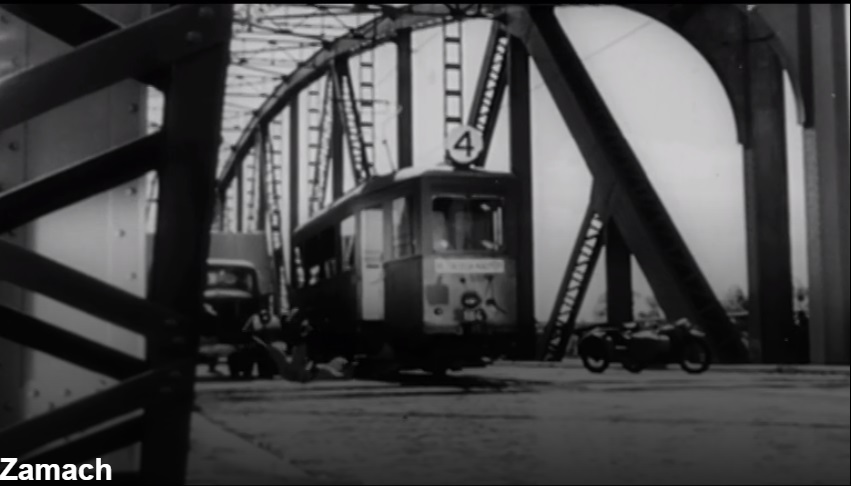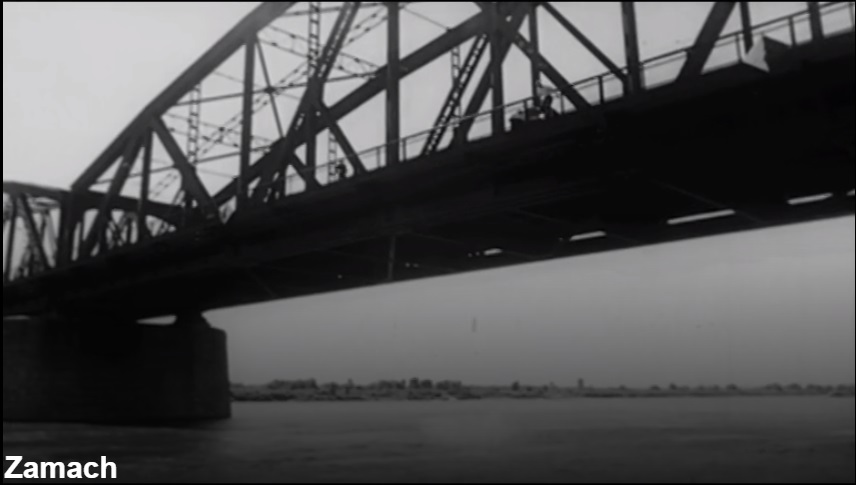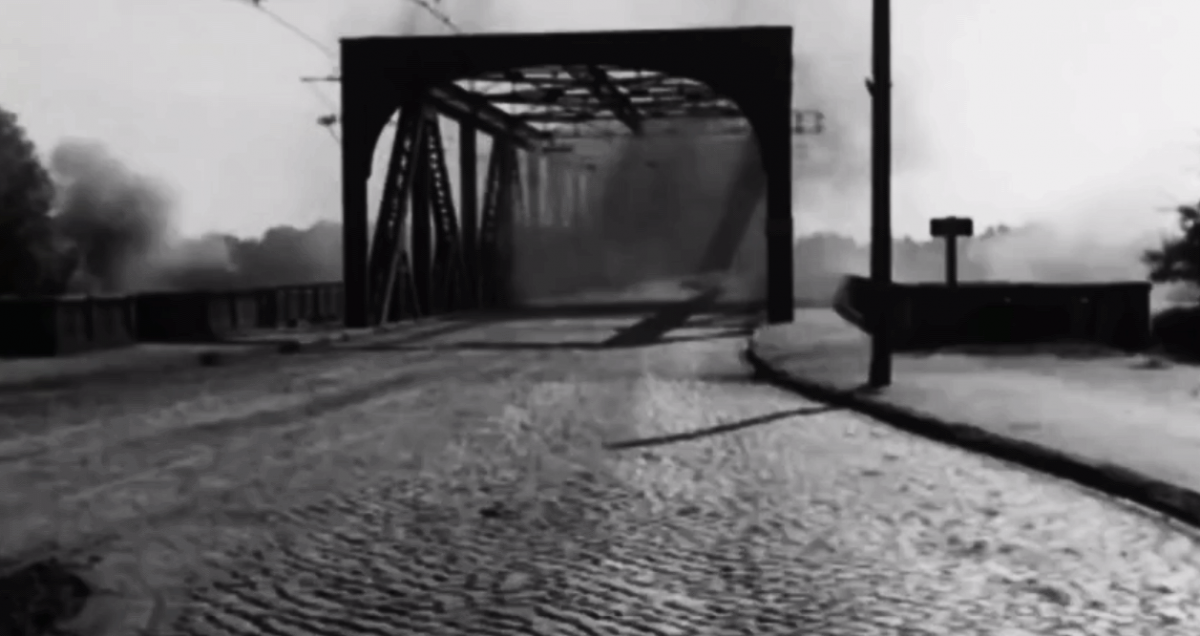Toruń in movies
An on-line Toruń Film Guide serves as an original way of getting to know the city itself.
It shall be a perfect alternative to strolling through the streets of Toruń, offering one of its kind opportunities to get to know the gems of Polish cinema filmed right on the very locations, in the buildings, little streets or the mysterious nooks and niches scattered around the city.
Introducing film heritage by means of creating a film trail for tourists offers a completely new quality in the approach to the development of tourism and promotion. This tool has been successfully implemented for many years in the western countries, and it is aimed at expanding the knowledge about Toruń with its film roots. It will be an original and attractive complement to promoting the city with the traditional tourist trails.
The topography of the film trails shall be determined by the films themselves and the lives of their protagonists. Each of the films has been presented from an interesting perspective and their descriptions have supplemented with anecdotes, all in an effort to make them as appealing to tourists as possible. Those visiting Toruń will find out for themselves exactly which building it was that inspired Jerzy Passendorfer to shoot the key scene in the film “Zamach / Assassination”, which of the films shot in Toruń had excellent reviews and received a shower of awards, in which of the films taking a 200-metre step was the most important scene, or what and why was filmed at ul. Ciasna and ul. Panny Marii, as well as find many other interesting facts to remember.
***
Toruń in movies
The film “Caissa” (2011) was directed by Marcel Woźniak, who also wrote the script for it. The title Caissa is a goddess of chess. In the film, Toruń pretends to be an imaginary chessboard the main protagonists use to play a game of their lives. The rhythm of the game is determined by the clocks on the Gothic towers. The edges of the board are the tenement houses and walls of the city.
The very first shots in the film show ul. Ciasna, namely its section running between ul. Mostowa and ul. Podmurna. Then, we see the Leaning Tower situated at the south-west corner of the historic curtain walls of the Old Town, as well as a panorama of the city walls seen from the Vistula River bank and the façade of the former “Orzeł” cinema, now completely gone, which at the time operated at ul. Strumykowa 3, which branches off ul. Szeroka.
We can see the protagonists inside and in front of Primary School No. 1 situated at ul. Wielkie Garbary 9, and then on the roof of the Centre of Contemporary Art “Znaki Czasu” situated at ul. Wały Generała Sikorskiego 13, as well as on the Philadelphia Boulevard and then also walking next to the Old Town City Hall, when you can also admire a beautiful view of its courtyard.
In the film, you can see a number of actors, who were born in Toruń, for example: Radosław Smużny, Paweł Tchórzelski, Jarosław Felczykowski and Anna Magalska-Milczarczyk.
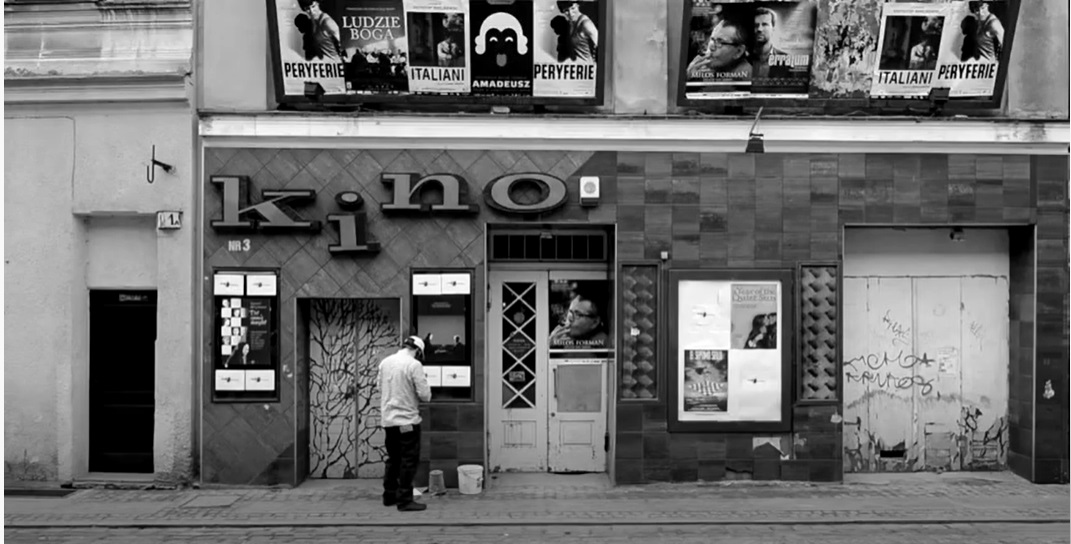
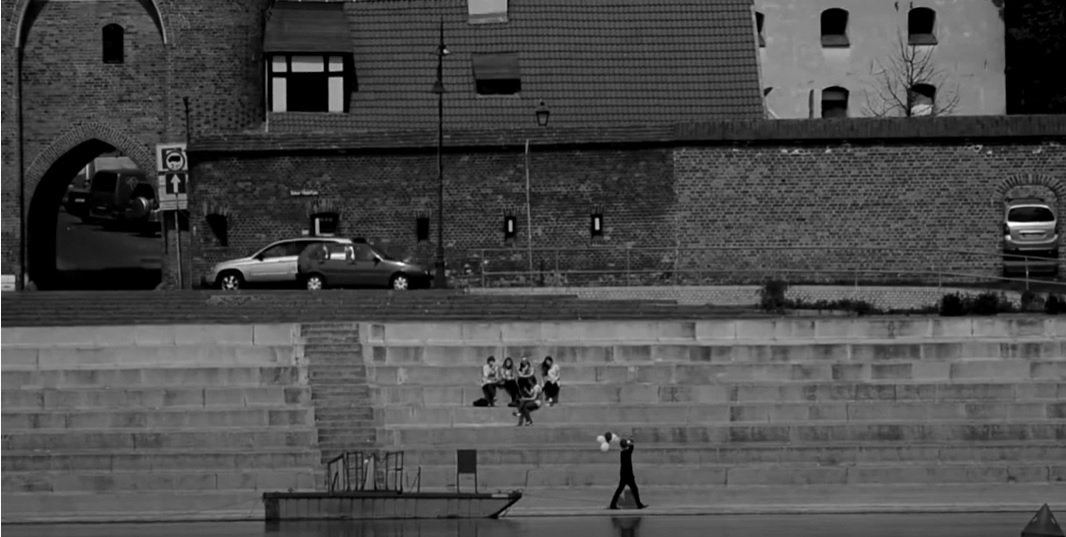
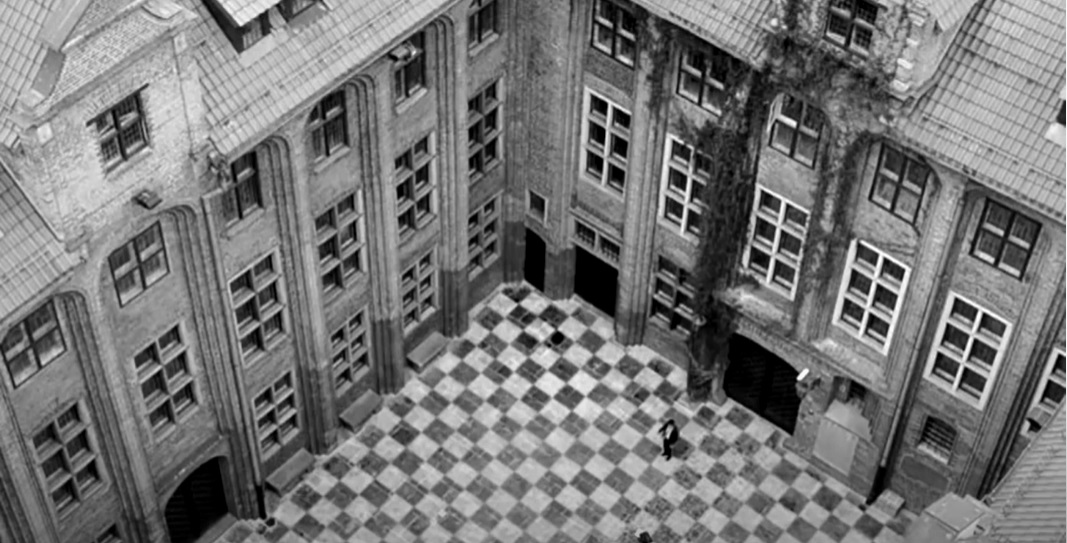
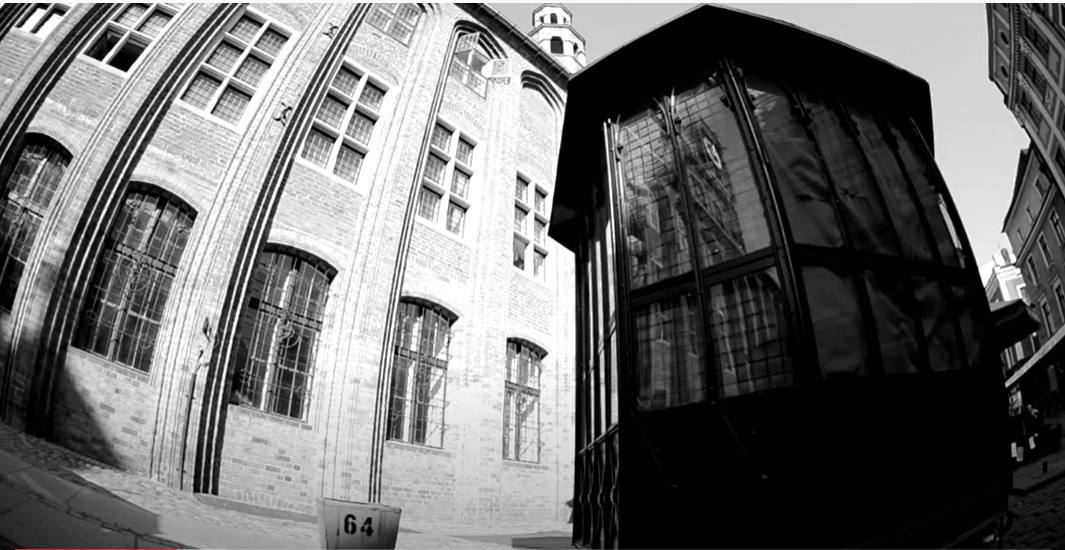
The film “Ekscentrycy czyli po słonecznej stronie ulicy” was directed by Janusz Majewski, in 2015. It is a story about a post-war immigrant, Fabian (played by Maciej Stuhr), who in the 1950s returns from England to Poland and comes up with an idea to start a big band ensemble and play swing.
The majority of the scenes in the film were shot on locations in the region of Kuyavia and Pomerania. Toruń plays itself in the film and we can see the inside the Arthus House situated right in the heart of the Old Town, when Fabian’s big band is performing on stage. Fabian arrives at the Arthus House in a red limousine and this car was also used to shoot a number of scenes at ul. Najświętszej Marii Panny, which branches off the Old Town. Later in the film, we can see the band giving a concert inside the Great Hall of the Arthus House, as well as the wide stairway leading up to the hall with Modesta Nowak (played by Natalia Rybicka) standing on it.
The film features performances by a number of the greatest actors of Polish cinema, for example: Sonia Bohosiewicz, Wiktor Zborowski, Wojciech Pszoniak, and Anna Dymna.
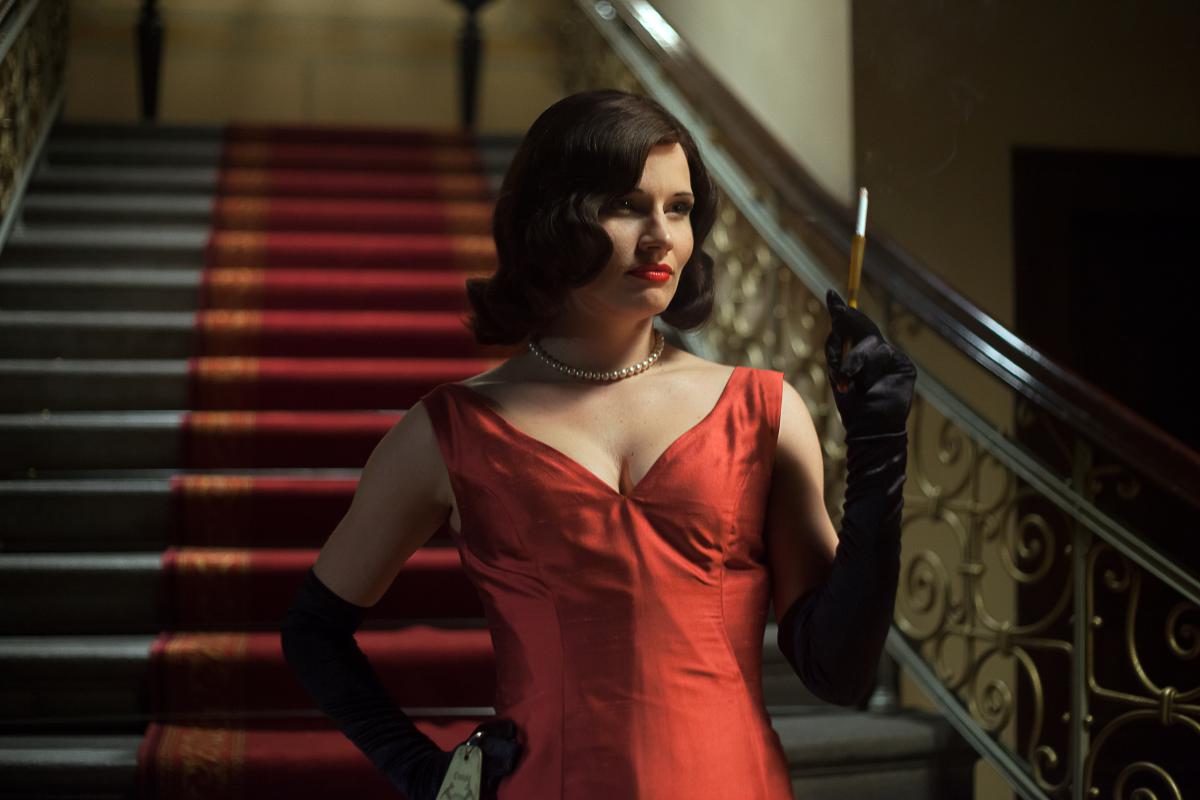

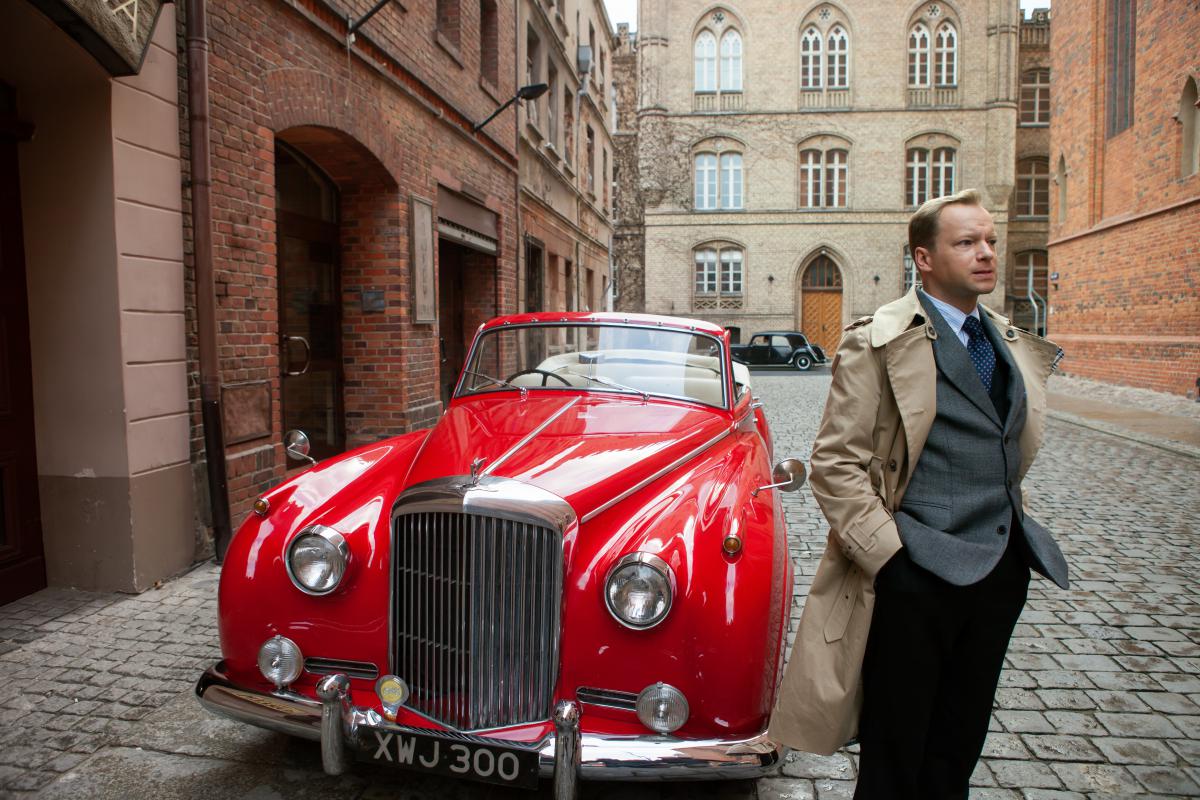
The film “Jeszcze nie wieczór / Before Twilight” was directed by Jacek Bławut, in 2008. It is a portrayal of love and passing. The story in the film focuses on a group of retired actors living in an old people's home in Skolimów, who are offered an opportunity to play a role, most likely for the last time in their lives.
The rotunda-shaped prison, i.e. the so-called “Okrąglak”, located at ul. Piekary 53, was the primary location for the scenes shot in Toruń. The prison became a theatre stage, where the actors performed “Faust”, in front of an audience comprised of authentic prisoners kept in “Okrąglak”. The film was also shot on a number of other locations. The main protagonist in the film portrayed by Jan Nowicki can be seen walking along a number of streets in Toruń, including ul. Pod Krzywą Wieżą, ul. Bankowa and ul. Podmurna, and finally along ul. Fosa Zamkowa, the latter of which is situated right next to the ruins of the former Teutonic castle. In the film, we can also see a number of shots taken against the background of the Wilam Horzyca Theatre in Toruń and Żeglarska Gate, the latter of which is the crowning element of ul. Żeglarska that branches off the Old Town. Protagonists in the film can be found walking along ul. Kopernika and ul. Ciasna.
A number of great luminaries of Polish cinema were cast in the film. Playing alongside the already mentioned Jan Nowicki, we can admire the talents of Beata Tyszkiewicz, Danuta Szaflarska, Irena Kwiatkowska, Nina Andrycz, Ewa Krasnodębska, Roman Kłosowski, Wieńczysław Gliński, and Stefan Burczyk. All of them were partnered by two actors of the younger generation, namely Sonia Bohosiewicz and Antoni Pawlicki.
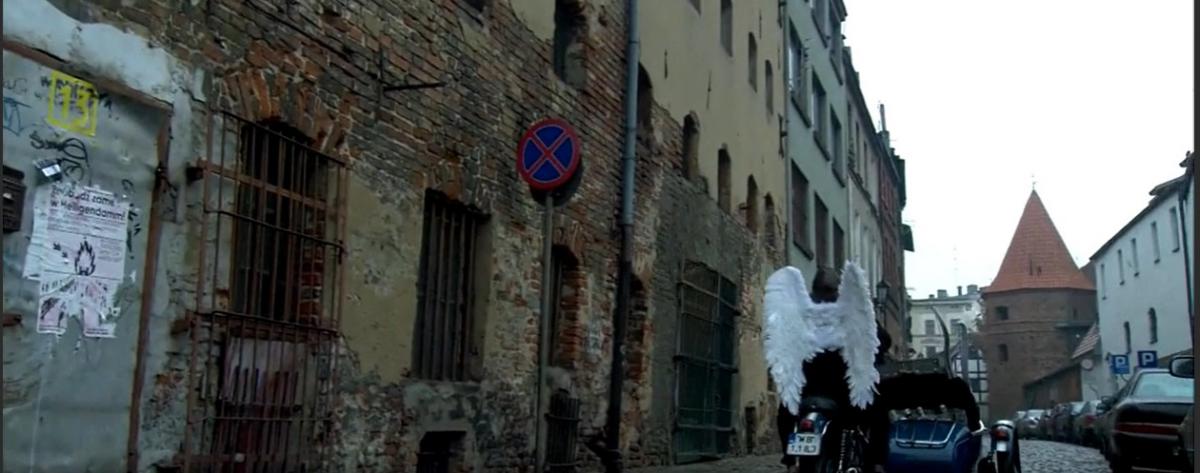
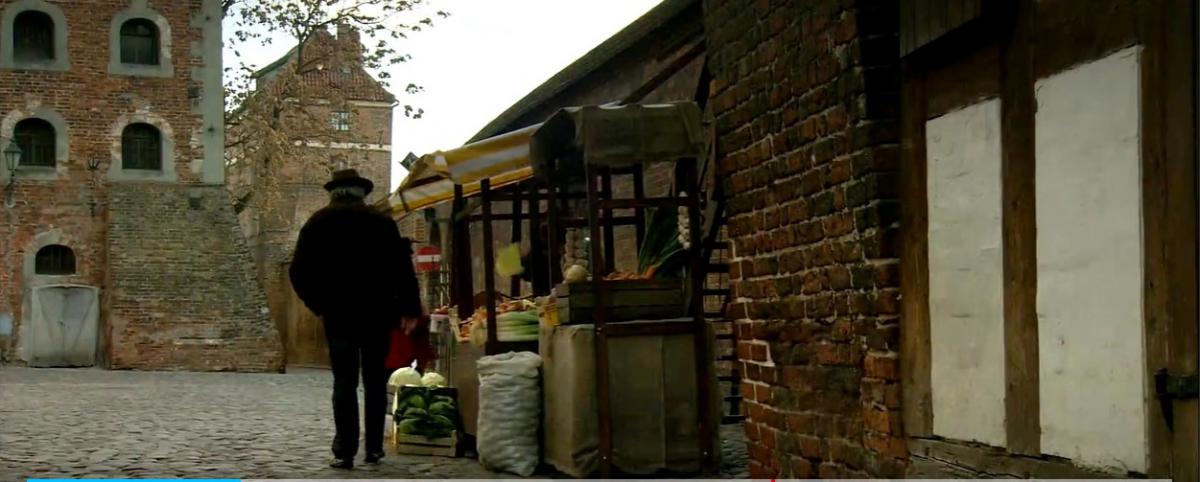
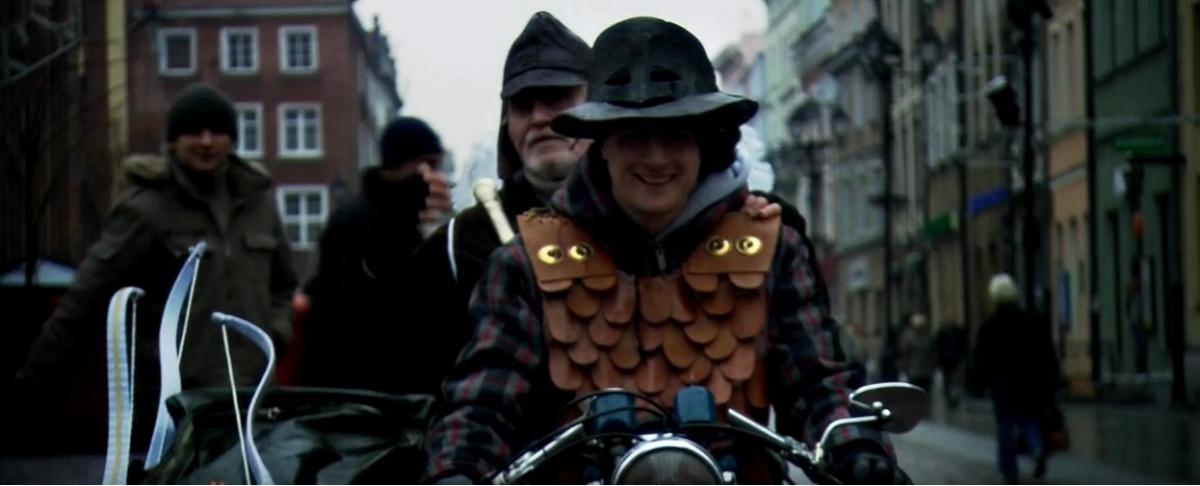
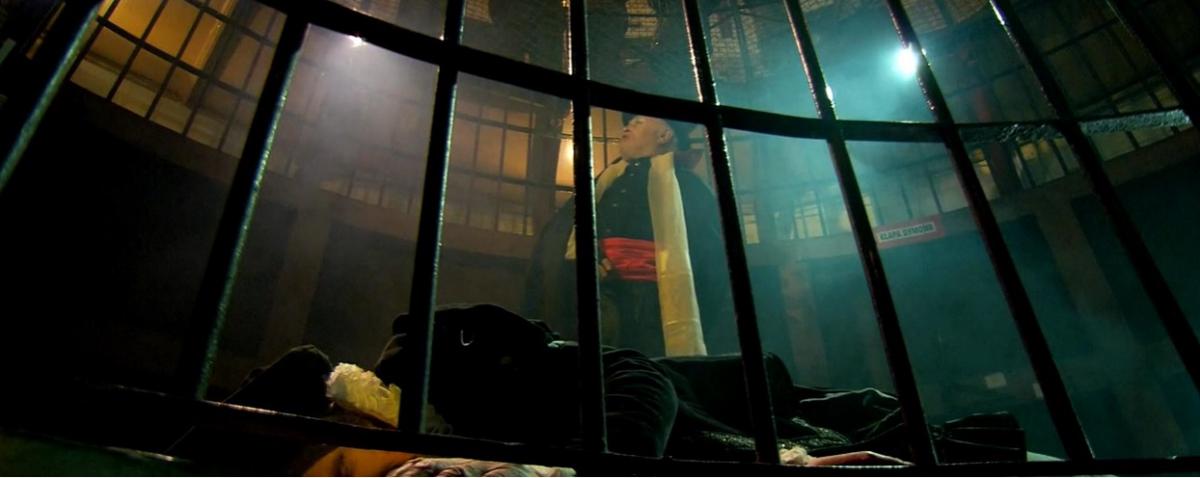
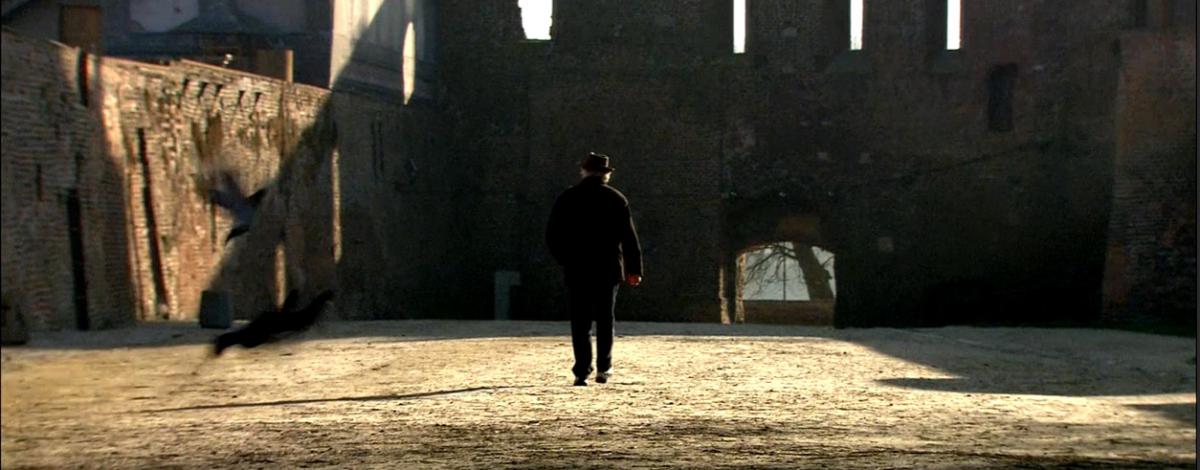
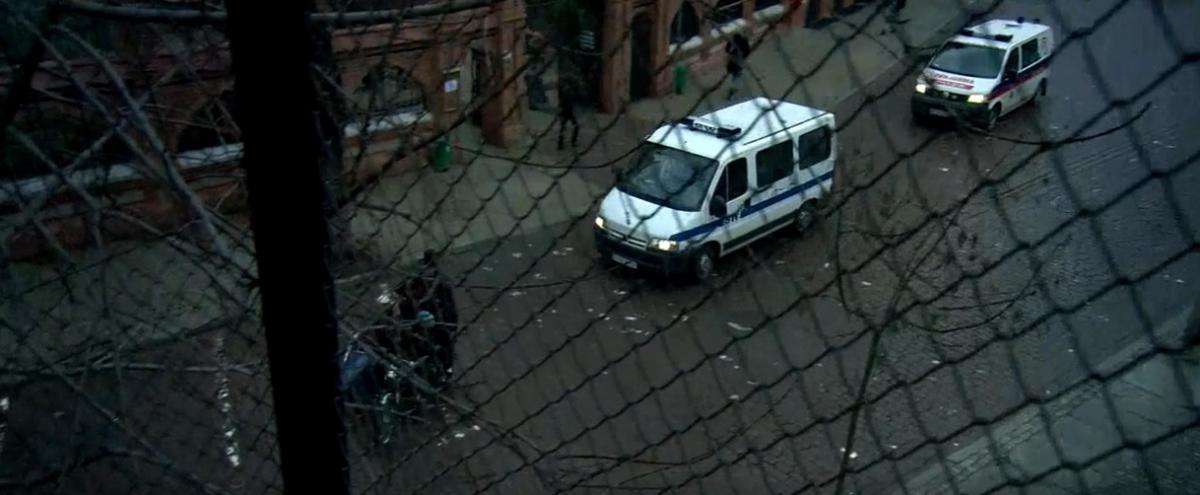
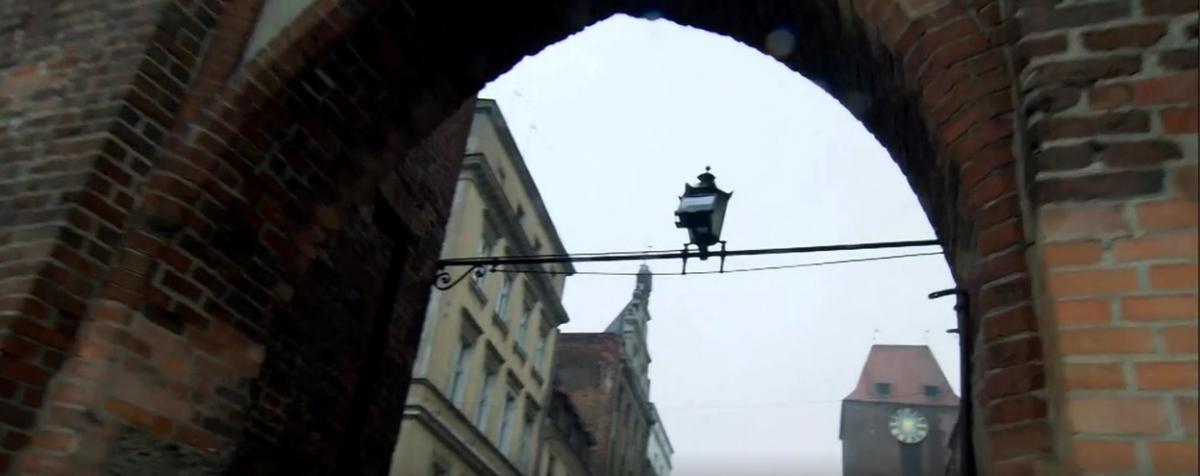
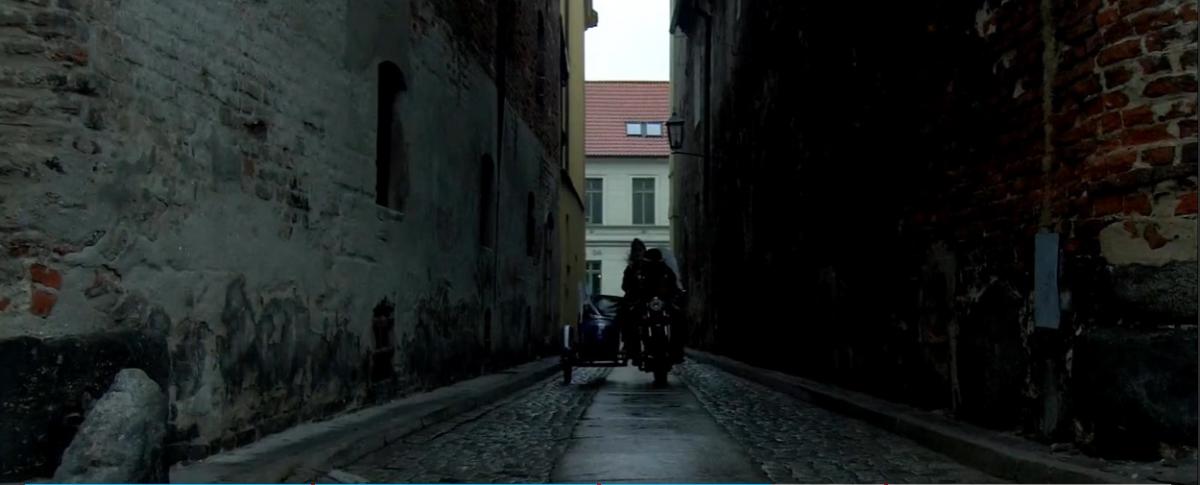
The film “Kto nigdy nie żył / Who Never Lived” is a directing début from the renowned actor Andrzej Seweryn, released in 2006. It portrays the life of a young priest Jan (played by Michał Żebrowski), who suddenly learns that he is carrying the HIV virus. A little later, he encounters a group of young people – one of them is Marta (played by Joanna Sydor). Together, they decide to set out on a journey.
The film features quite a few scenes shot on locations in Toruń. For example, Marta and Father Jan can be seen taking a stroll along ul. Pod Krzywą Wieżą, then along ul. Żeglarska, and then within the area of the Old Town, where in the background we see the Old Town City Hall and the monument of Nicolaus Copernicus. Some scenes were also shot inside Heban Hotel, which is situated on ul. Małe Garbary that branches off ul. Szeroka. The Burgher's Manor (Dwór Mieszczański) located at the very end of ul. Podmurna, when walking towards the Vistula River, was used to play the façade of a hotel, where the travelling party of people stayed. The scenes in which Father Jan conducts a service were shot inside Saint John's Cathedral, which is situated right at the corner of ul. Kopernika and ul. Żeglarska. The film also features a beautiful panorama of the Old Town, looking from the so-called Kępa Bazarowa (an inner island in the city) located on the left bank of the Vistula River.
The role of the singer and friend of Father Jan was played by Robert Janowski, who was born in a neighbouring city of Inowrocław.
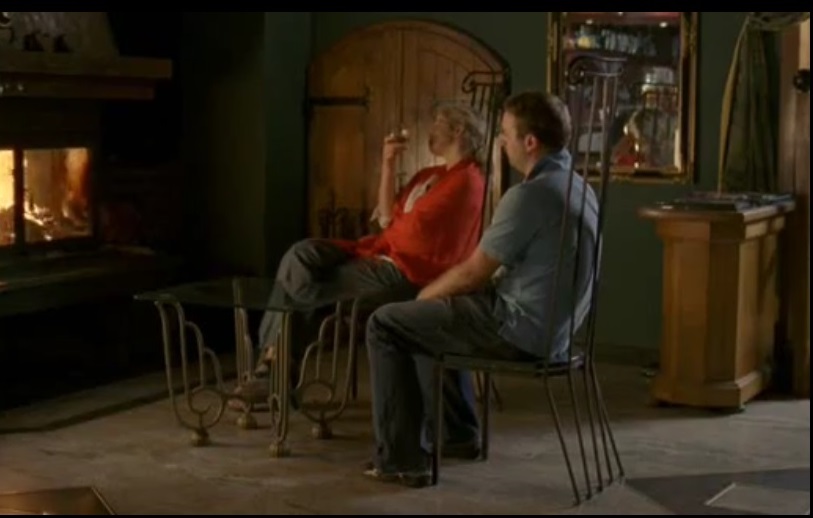
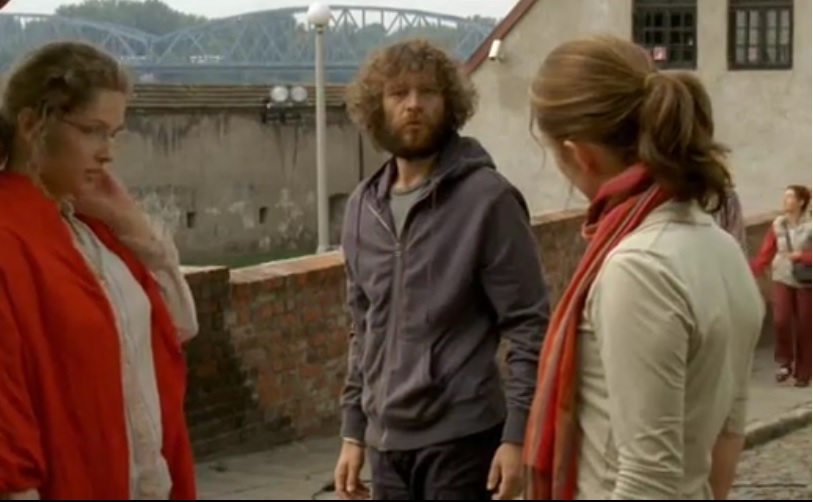
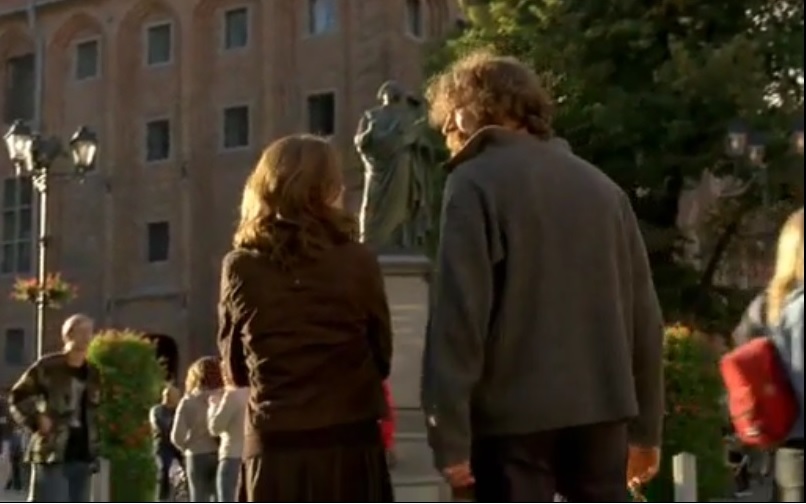
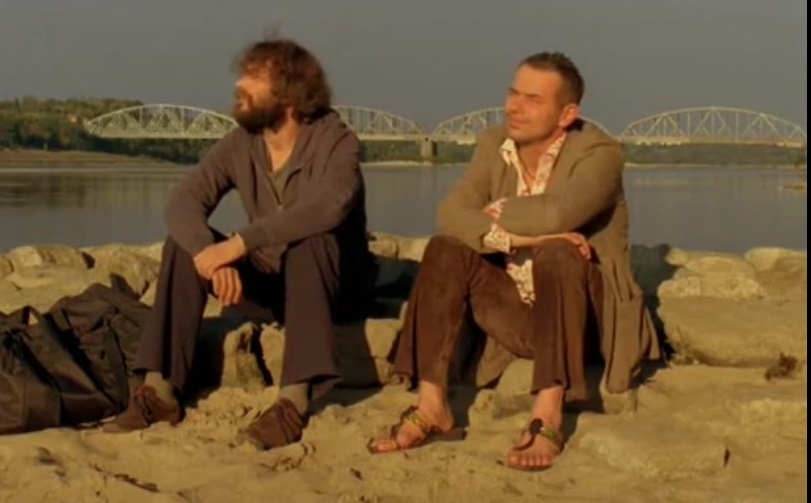
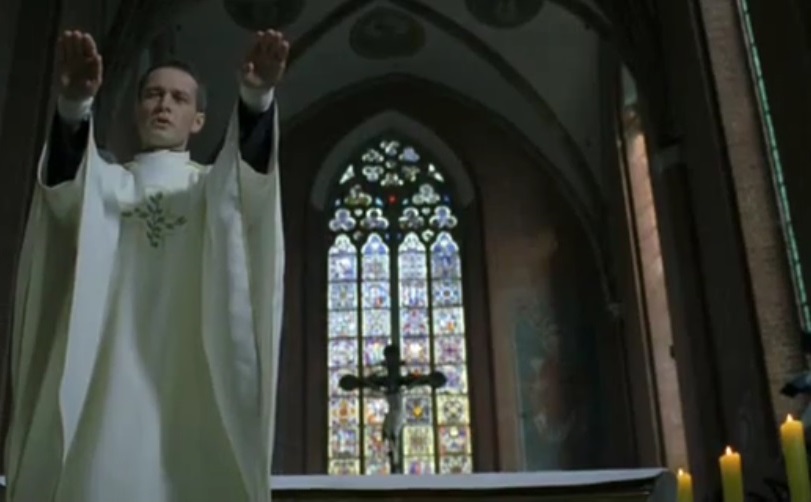
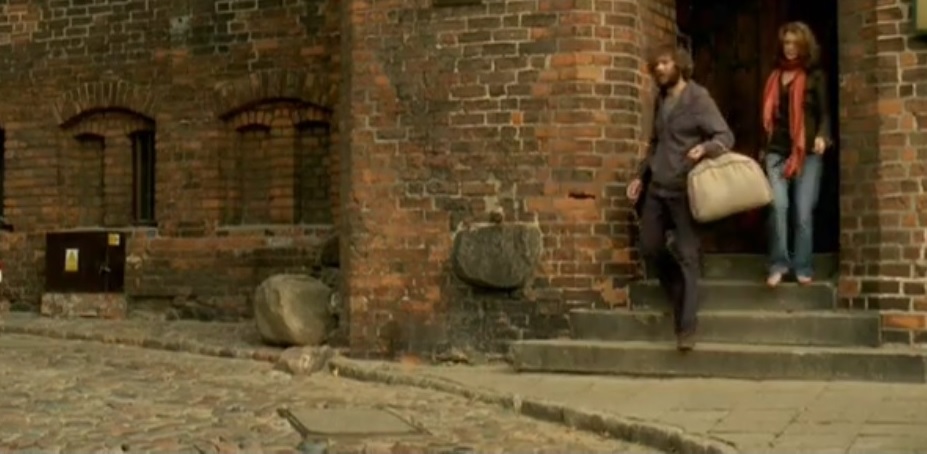
“Lekarze” is a TV series broadcast in the years 2012-2014, directed by Filip Zylber, Marcin Wrona, Jacek Filipiak, and Bartek Konopka. For the purpose of making the series, the filmmakers adopted the so-called Centrum Targowe Park (a complex of buildings dating back to a pre-war era) located in the Bydgoskie Outskirts, at ul. Szosa Bydgoska 3, which was used to play the “Copernicus” Specialist Hospital in the film.
There was virtually no location throughout Toruń left unused by the film crew and the TV series was shot all around the city. For example, the apartment where the main female protagonist in the film lived was found at ul. Łazienna 10. Some of the shots in the series were taken within the area of the Old Town, for example at the already mentioned ul. Łazienna, but also on locations at ul. Szczytna, ul. Mostowa, the Old Town, ul. Franciszkańska, the latter of which was used as background for shooting a number of scenes featuring the Planetarium building, and finally at the corner of ul. Franciszkańska and ul. Piekary, against the background of the rotunda-shaped prison (the so-called “Okrąglak”). You will also see the protagonists in the film walking along the historic streets of the Bydgoskie Outskirts, or during an emergency rescue mission happening at the speedway arena (the so-called “Motoarena”) in Toruń. The panorama of the Old Town also makes frequent appearances on the screen, as seen from the left bank of the Vistula River, as well as Kępa Bazarowa (an inner island in the city) and the Józef Piłsudski Road Bridge, including a number of cafés and restaurants scattered all around Toruń, for example the one located at Hotel Bulwar.
A number of famous Polish actors is featured in the film, such as: Magdalena Różczka, Paweł Małaszyński, Jacek Koman, Danuta Stenka, Katarzyna Bujakiewicz, Agnieszka Więdłocha, Szymon Bobrowski, Marcin Perchuć, Borys Szyc, and Olga Bołądź.
The TV series became quite famous outside Poland, as the “Lekarze” franchise was sold to China to be broadcast via local CCTV (with close to a billion subscribes having access to it). The series was also bought by Spanish-speaking television stations in the USA.
_
The film “Prawo i pięść / The Law and the Fist” was directed by Jerzy Hoffman and Edward Skórzewski, in 1964, and it is commonly referred to as “the first Polish western.”
The film is set right after the end of the Second World War and Toruń “plays” a deserted German town of Graustadt, which had already been renamed to Siwowo, in Polish. The town is visited by Andrzej Kenig (played with bravado by Gustaw Holoubek), a government's plenipotentiary, who comes to fight his personal battle between good and evil.
A number of scenes in the film were shot within the area of the New-Town Market, where in the background you can see the church of St. James situated in the eastern corner of the Market, as well as the evangelical church of the Holy Trinity located right in the middle of the New Market (it is now owned by the Tumult Foundation), and also ul. Ciasna, one of the narrowest streets in the Old Town, whose undeniable charm was recognised by lots of other filmmakers. The scenes shot at that particular street were edited in such a manner as to suggest that ul. Ciasna actually connects to the New-Town Market, which is not the case. It is actually situated a little further away and connects ul. Mostowa to ul. Podmurna.
On 31st August 2008, a special installation commemorating the film was unveiled at the New-Town Market, comprising the so-called “pushcart of a repatriate” and a poster pillar with full-size photos from the film, both situated next to the western frontage of the New Market.
The leading musical theme in “The Law and the Fist” is the ballad titled “Nim wstanie dzień” sung by Edmund Fetting, with the lyrics written by Agnieszka Osiecka and the music composed by Krzysztof Komeda.
Playing alongside the already mentioned Jan Holoubek, we can see Wiesław Gołas, Zdzisław Maklakiewicz, and Hanna Skarżanka, among others.
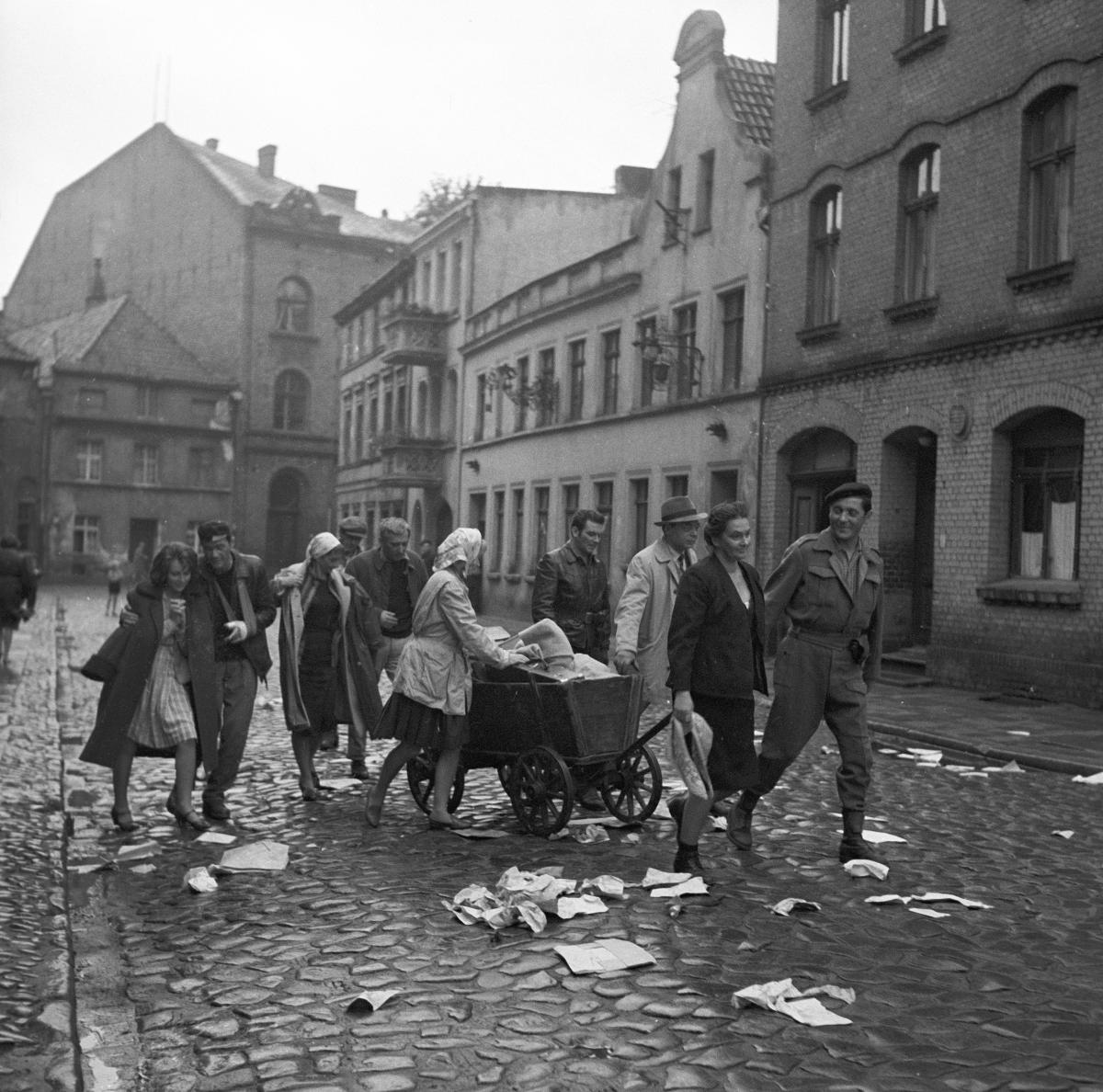
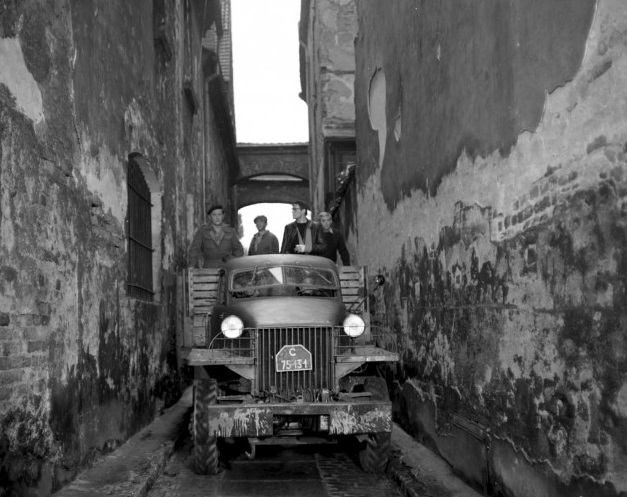
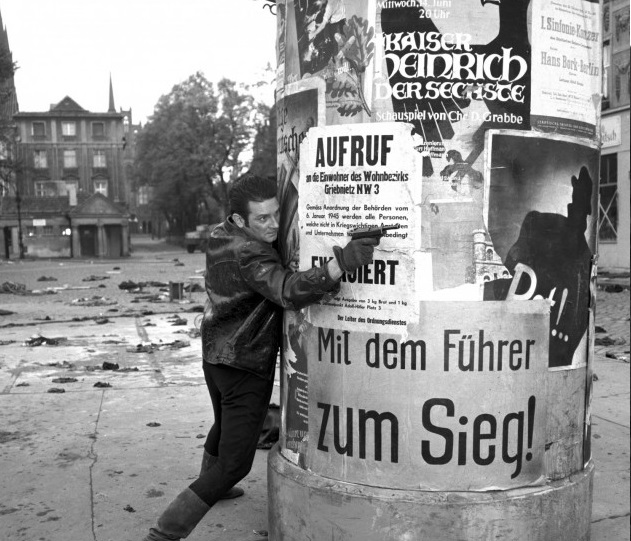
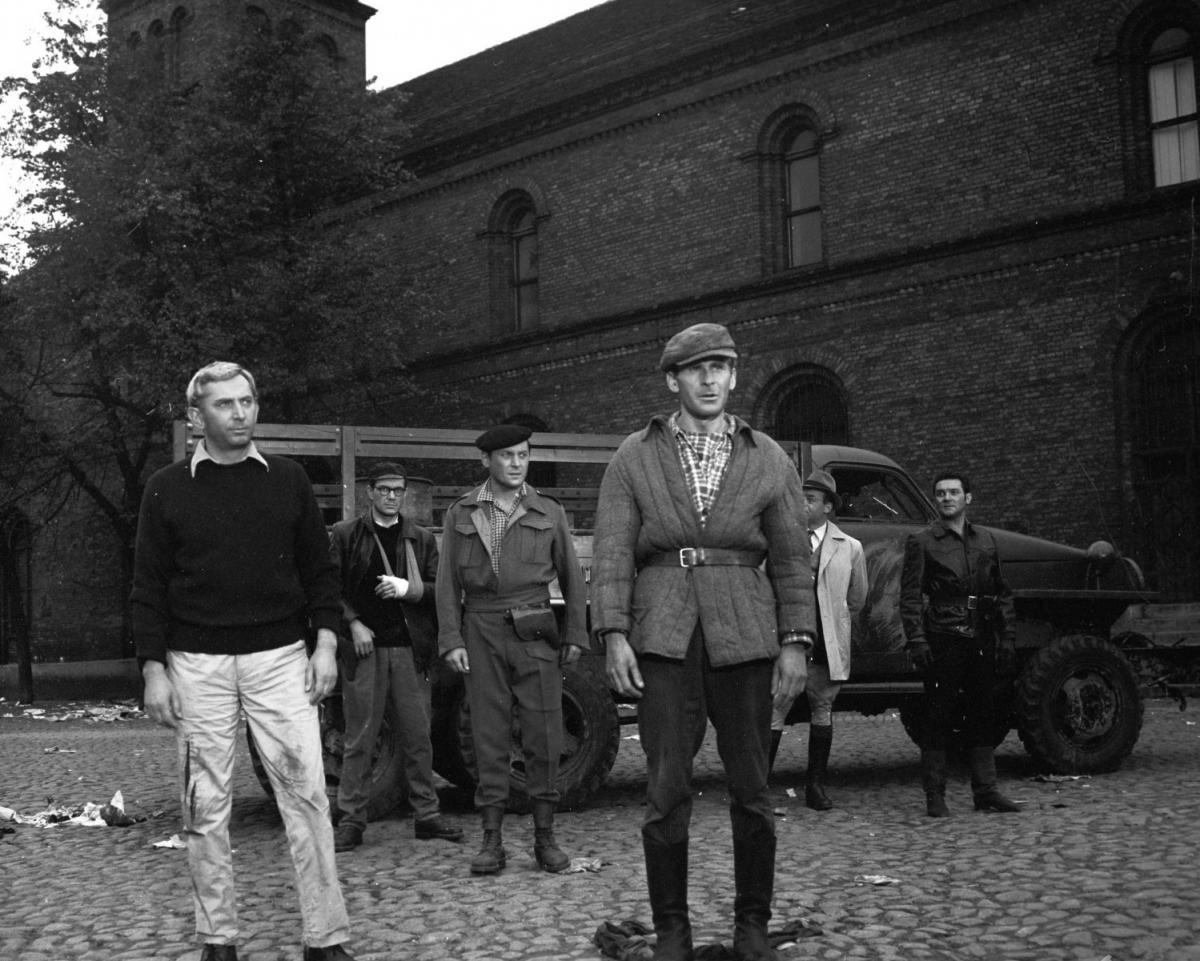
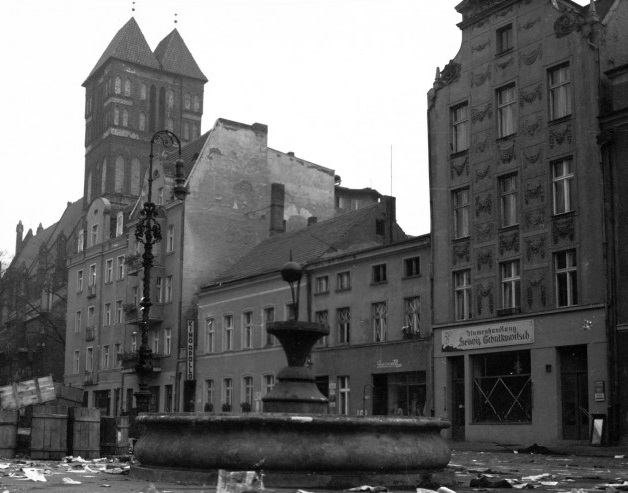
The absolutely cult film “Rejs / A Trip Down the River” directed by Marek Piwowski was shot in Toruń, in 1969. The beach by the river that we see in the opening scene is the right bank of the Vistula River – it is the contemporary Philadelphia Boulevard.
The very first shots in the film were taken along the beach close to the so-called Żeglarska Gate located at the end of ul. Żeglarska, which branches off from the Old Town toward the Vistula River. And it is right there on the Boulevard, next to Żeglarska Gate, where the shooting of the film was commemorated with a board full of photos put there in 2005. There is also a mural painted on the wall running along the right side of the river, on which you can see a number of cult quotes from the film. The Philadelphia Boulevard is also the place where you will find the legendary boat “Old Katarzynka” seen in the very first scenes in the film. In the years 1969-2000, the boat used to sail between both banks of the Vistula River. The boat “Katarzynka” was built in 1955, at a shipyard in Budapest, originally to serve as one of the lifeboats on board of the passenger ship “Mazowsze”.
The film also features the panorama of the Old Town seen from the opposite bank of the river, the Józefa Piłsudskiego Bridge, and a view over the left bank of the Vistula River.
In “Rejs / A Trip Down the River”, we see both a number of professional actors, such as Stanisław Tym, Zdzisław Maklakiewicz, or Jan Himilsbach, the latter of which made his début on the big screen, as well as a handful of non-professional actors found during auditions.
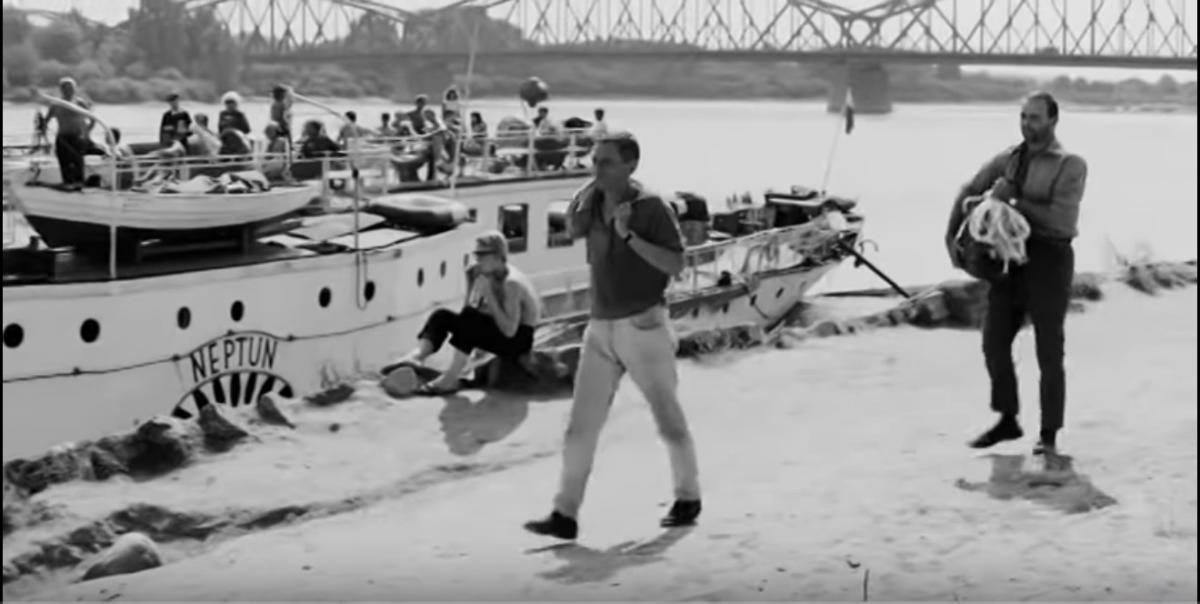
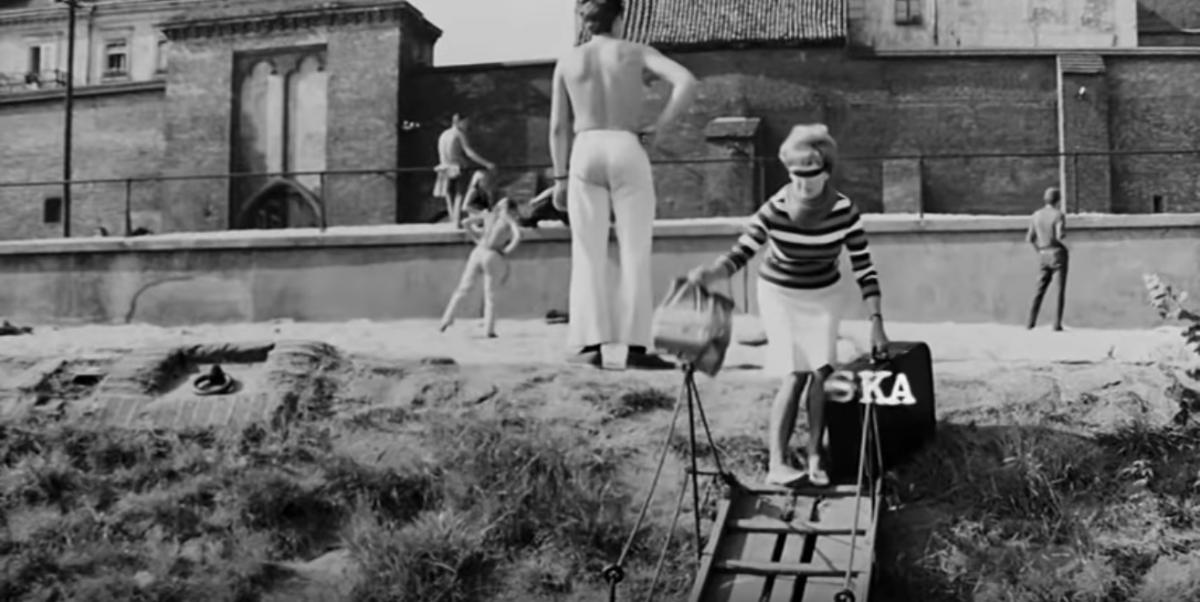
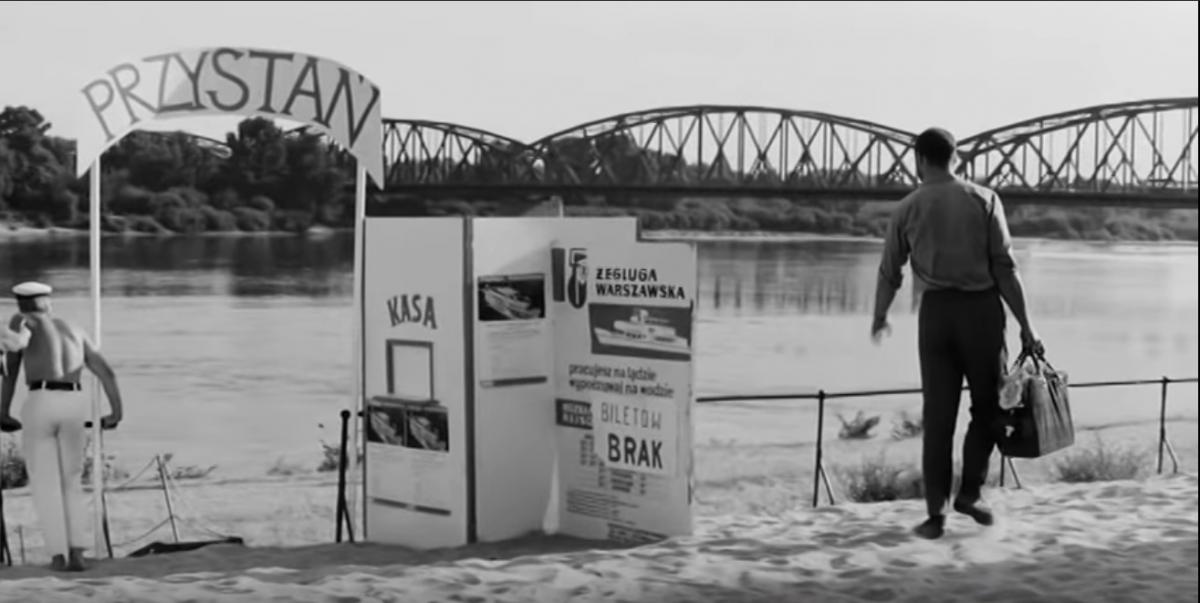
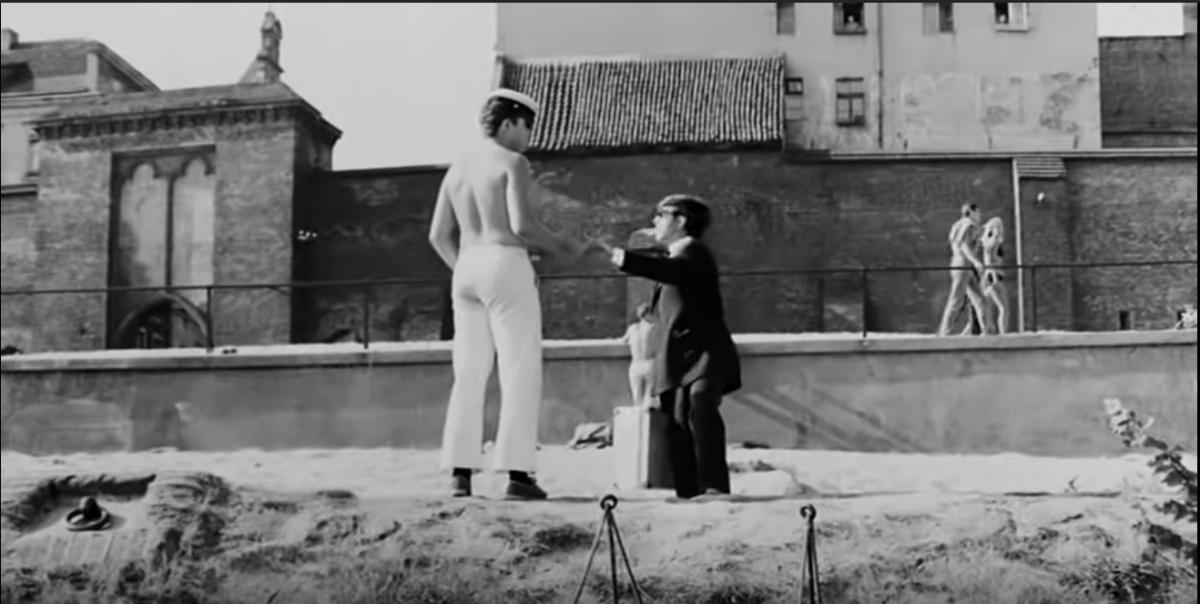
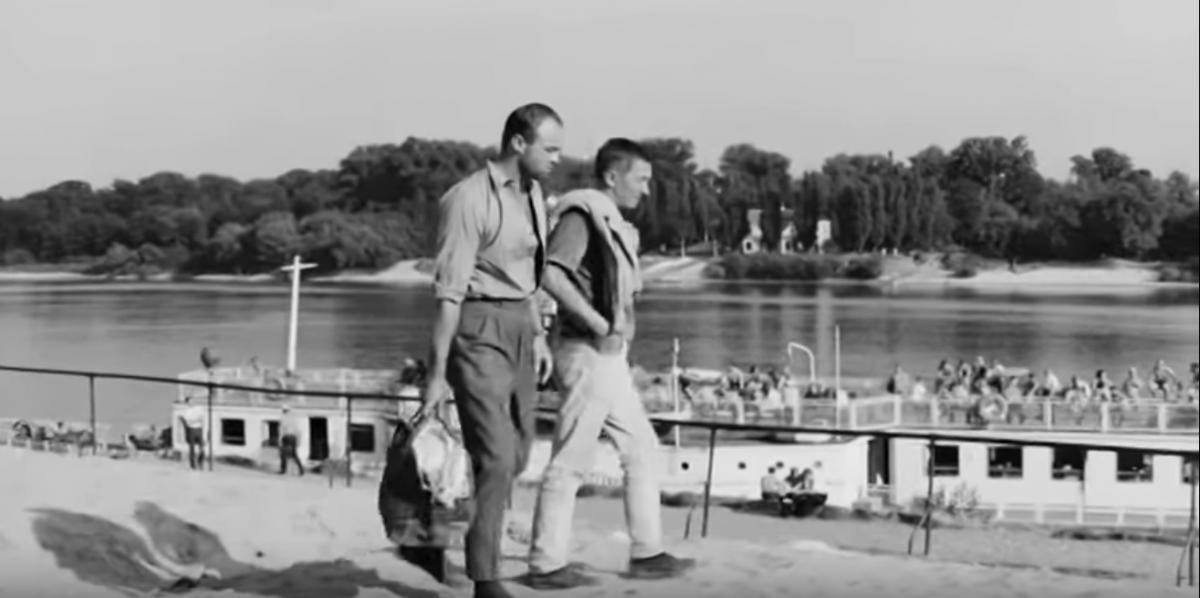
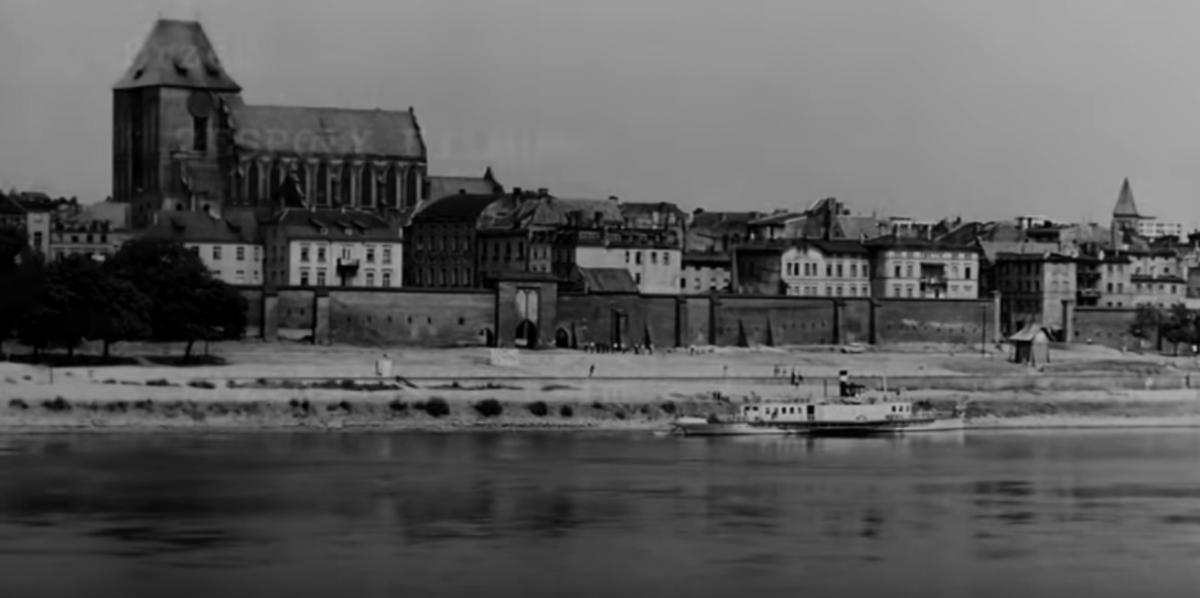
The film “Rok spokojnego słońca / A Year of the Quiet Sun” directed by Krzysztof Zanussi in 1984 is a unique film about love, in which Toruń played a small town situated somewhere in the so-called “Recovered Territories”.
It will be quite difficult to recognise the places shot in the film, when walking down the streets, nooks and crannies of the Old Town in today’s Toruń. Quite surprising, given the fact that the majority of the film was shot within the area of that very Old Town. Part of the scenery was ul. Podmurna, where now you can find a plaque commemorating the shooting of the film, embedded in the pavement close to building No. 83. In 2018, the plaque was unveiled by the film director himself, at a ceremony held during the Tofifest IFF. Other streets of the Old Town that played in the film included ul. Szewska and ul. Przedzamcze, as well as ul. Św. Jakuba, the latter of which radiates from the New-Town Market. The scenes taking place during the dancing party were shot inside the Arthus House.
Some shots were also filmed against the background of the rotunda-shaped prison (the so-called “Okrąglak”) located at ul. Piekary 53, which constitutes the only panopticon building ever constructed. A little further from the prison, a number of shots were filmed on ul. Franciszkańska, using as a background the contemporary Planetarium building, previously used as a gas tank and owned by the Municipal Gasworks. The railway bridge in Toruń and the steam locomotive bay at Toruń Miasto railway station were also used in the film, as landscape elements.
The film features an array of great Polish actors, including Maja Komorowska, Hanna Skarżanka, Stella Ewa Dałkowska, Jerzy Stuhr, Wiesław Michnikowski, Janusz Gajos or Marek Kondrat. The film received wide recognition from film critics all around the world.
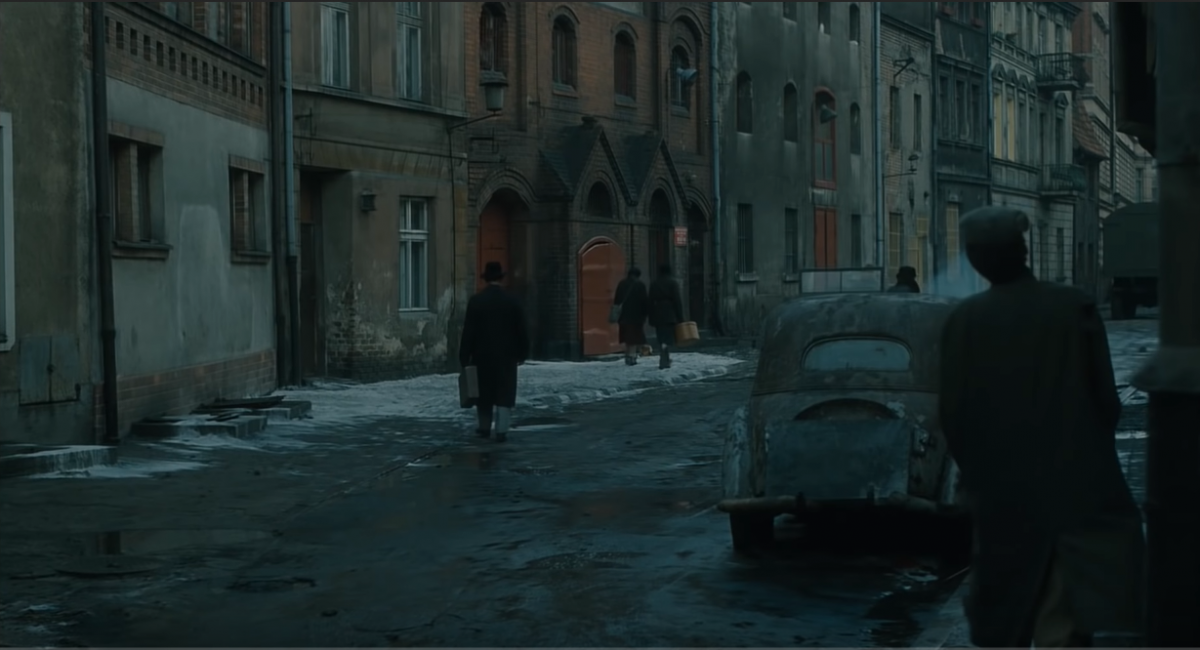
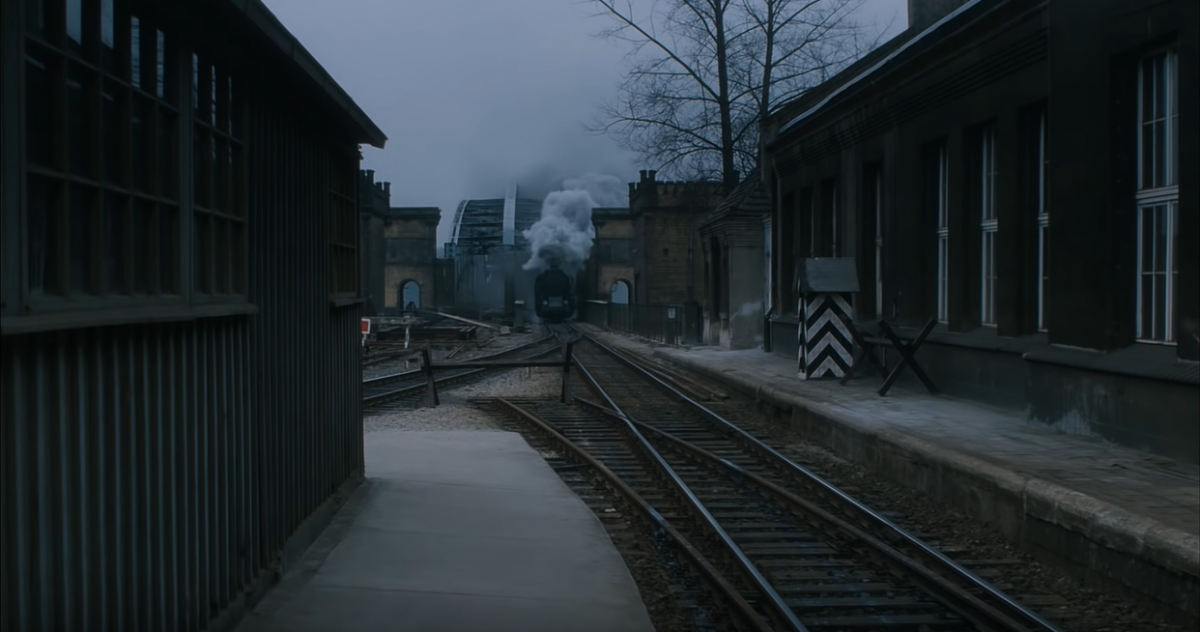
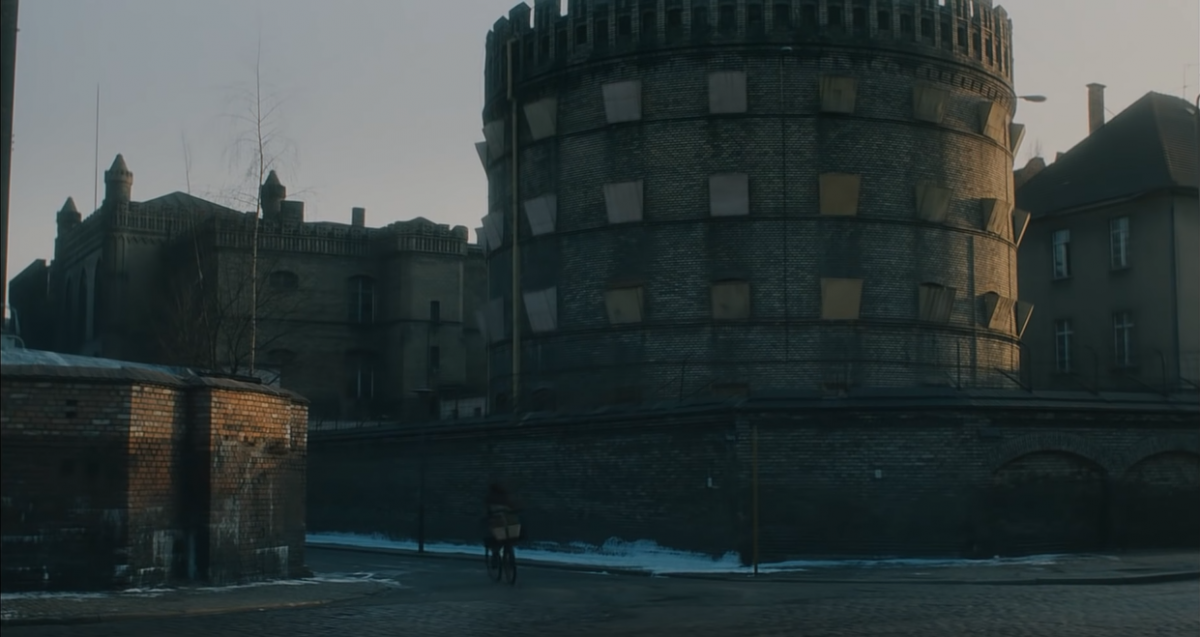
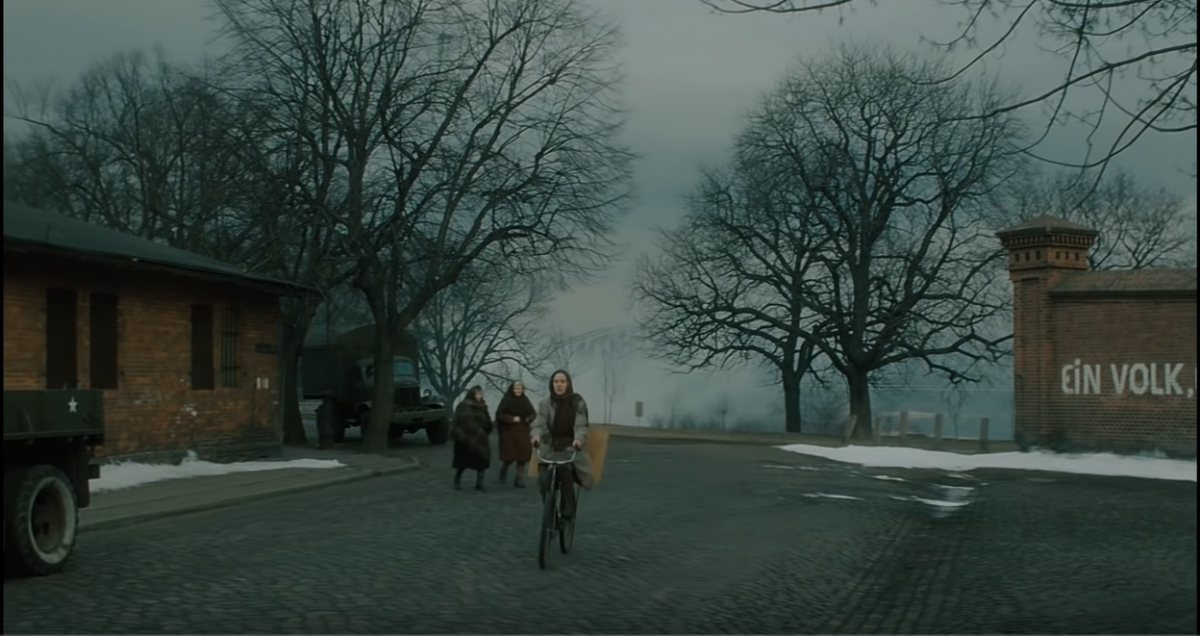
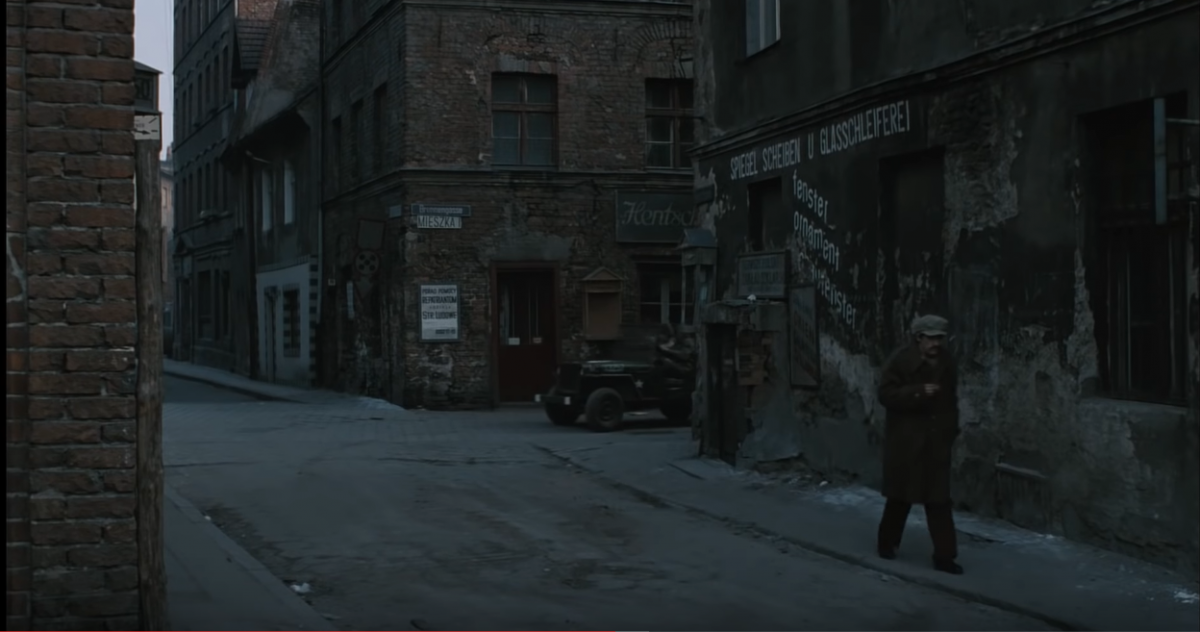
The film “Taksówkarz / Taxi Driver” (2008) was directed by Ryszard Kruk, and it is dedicated to the life of the eldest taxi driver in Toruń, Mr Henryk Janicki, who at the time when the film was being made celebrated the 50th anniversary of his professional career. In the film, Henryk Janicki, who was 77 back then, takes us on a ride through the streets of Toruń and tells us the story of his life, while driving in his Fiat 125p.
We accompany the Taxi Driver, when he is driving down ul. Najświętszej Marii Panny, which branches off the Old Town Market, and we can admire the view of the Church of the Assumption of The Blessed Virgin Mary and Bl. Rev. Stefan W. Frelichowski, which is one of the three Gothic churches preserved in substance of the Medieval Town of Toruń. Then, we go through the Old Town Market, after that down ul. Łazienna, which branches off ul. Szeroka, and continue toward the Philadelphia Boulevard and then along the boulevard itself. Later on, through the car windows we see the Bydgoskie Outskirts district situated in the western part of the city and the Rubinkowo District situated in the eastern part of Toruń, finally driving over the Józef Piłsudski Road Bridge and through the New-Town Market.
Henryk Janicki would start most of his taxi rides from the taxi rank situated at ul. Fosa Staromiejska, which can be seen in the shots filmed near the Wilam Horzyca Theatre building seen in the background.
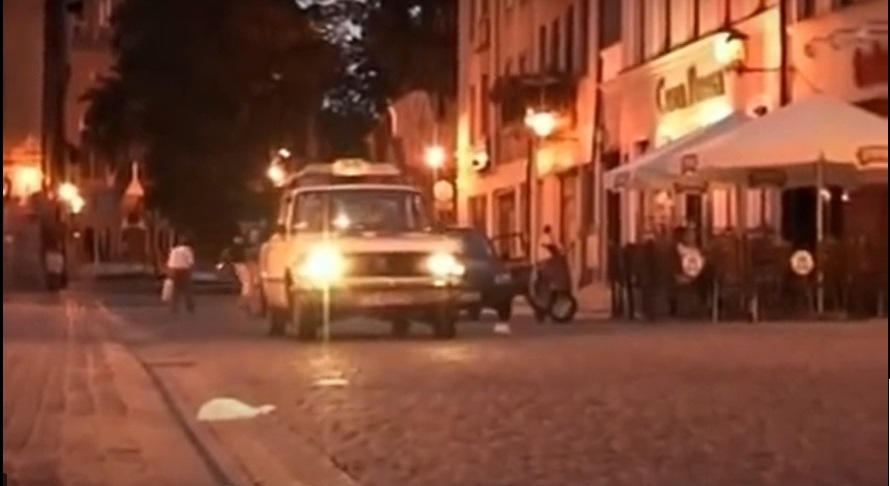
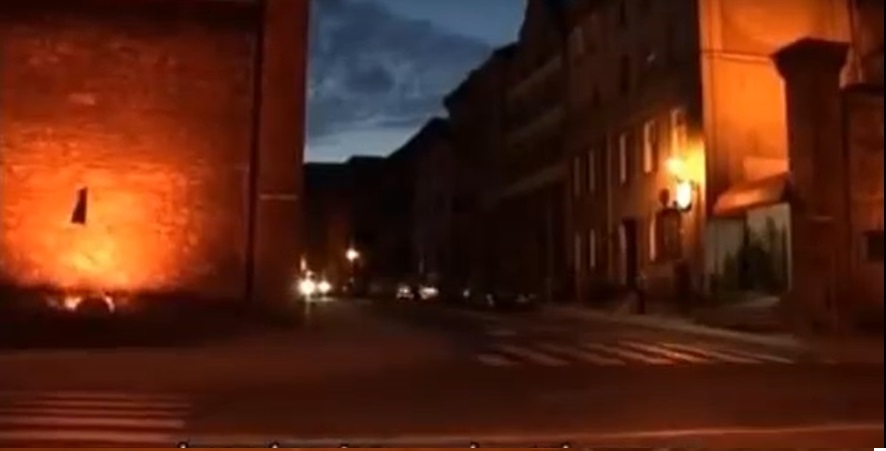
„Wściekły” film nakręcony w 1979 roku przez Romana Załuskiego na podstawie opowiadania Jerzego R. Milicza, w którym w postać głównego bohatera, kapitana Bogdana Zawadę wcielił się Bronisław Cieślak.
Kapitana Bogdana Zawadę przywiódł do Torunia jeden z tropów prowadzonego przez niego śledztwa w sprawie śmierci młodej dziewczyny w Opolu. Akcja filmu w jego toruńskiej części toczy się w mieszczącym się na Placu Teatralnym Hotelu Polonia, który stał się filmowym Hotelem Piast, w kadrach widzimy również mieszczącą się tuż obok ul. Chełmińską, która pod koniec lat siedemdziesiątych ubiegłego wieku nazywała się jeszcze Feliksa Dzierżyńskiego. Komisarza Zawadę spotykamy również na toruńskim lotnisku, w czasie lądowania helikoptera, którym przyleciał do Torunia. Tej scenie towarzyszy również widok ówczesnej panoramy Torunia oraz mostu Józefa Piłsudskiego, widzianych z lotu ptaka oraz na ul. Przedzamcze, mieszczącej się w południowej części Zespołu Staromiejskiego. Kilka ujęć filmowych powstało również na Dworcu Głównym PKP, położonym na lewym brzegu miasta, przy ul. Kujawskiej 1.
Obok Bronisława Cieślaka w filmie zagrali m.in.: Barbara Brylska, Krzysztof Kowalewski, Zbigniew Buczkowski, czy wreszcie urodzony w Toruniu Bogusław Linda.
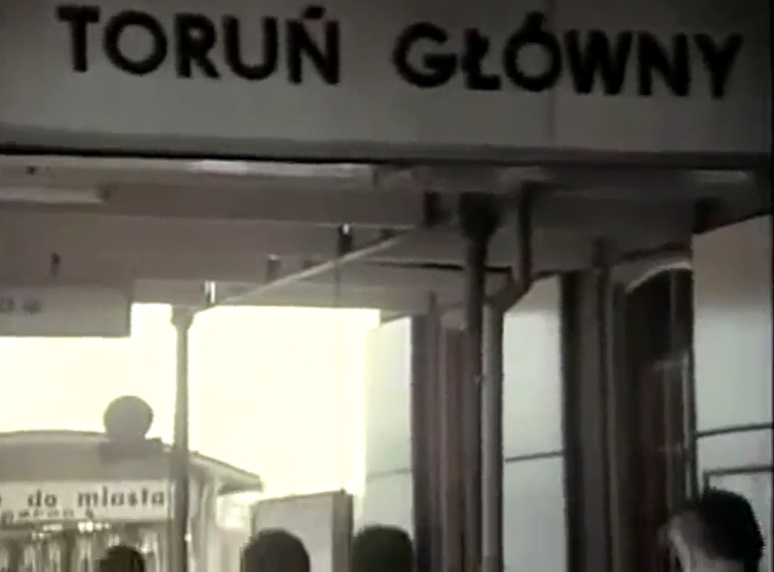
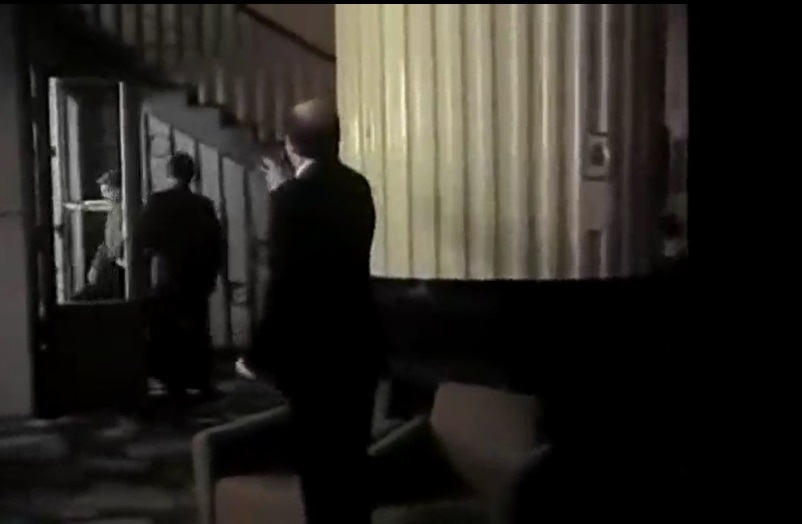
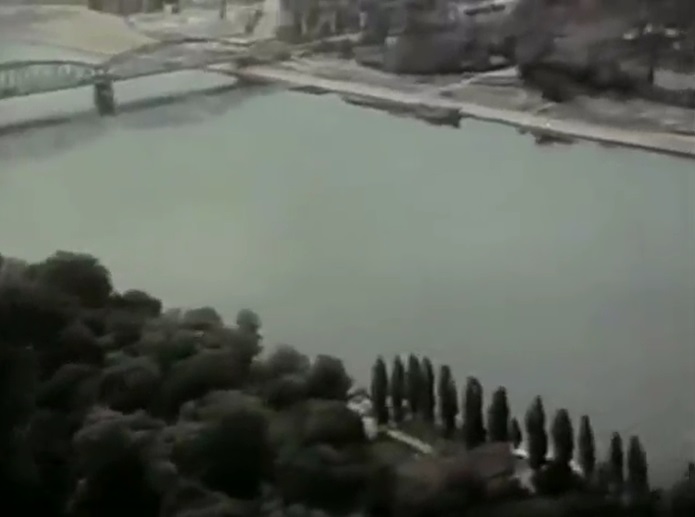
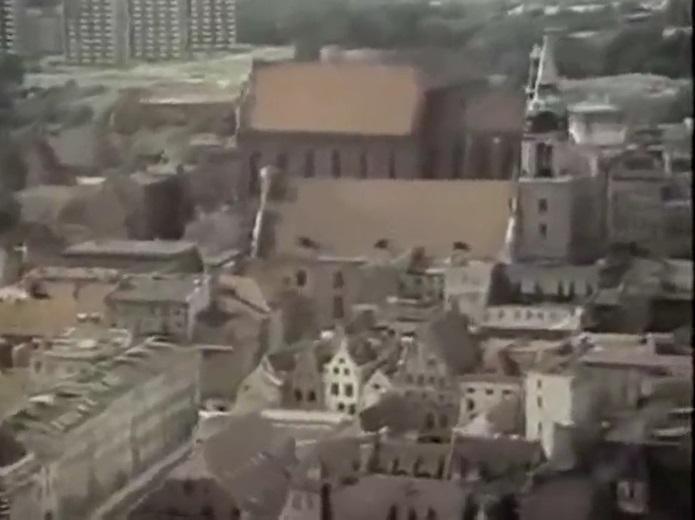
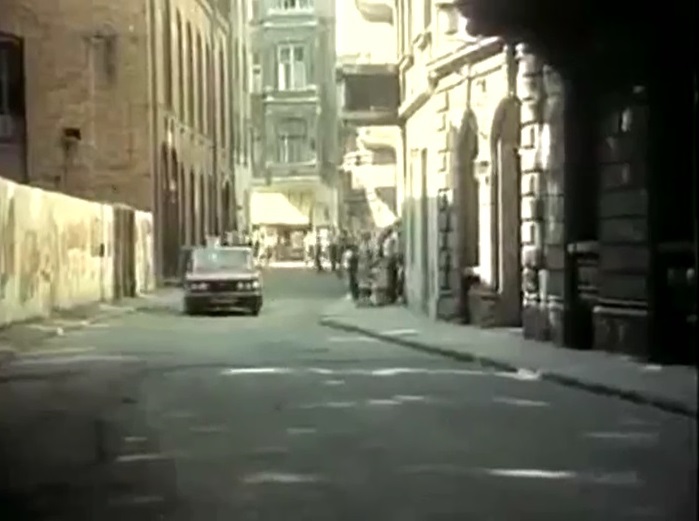
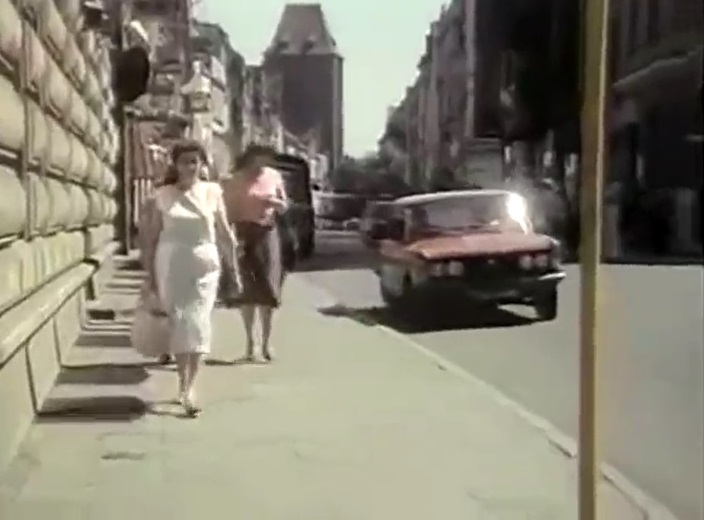
The film “Wśród nocnej ciszy / Quite is the Night” was directed by Tadeusz Chmielewski, in 1978. It is based on the novel “Příběh kriminálního rady” written by the Czech author Ladislav Fuks, in 1971. It is a morbid story about a search for a serial killer, which combines a crime scheme with psychological aspects.
The film was shot on a number of locations, with Toruń being one of the most prominent of them. Most of the scenes were shot at the so-called Port Zimowy (Winter Port) situated at the Bydgoskie Outskirts district, within the area of Rybaki housing estate. The film was also shot on the streets in the Old Town, for example at ul. Ciasna, which we can see reflected in the windscreen of the car driven by Superintendent Teofil Herman, who leads the investigation, or at ul. Szpitalna, which branches off the New-Town Market, as well as in the vicinity of a former parish church situated in Toruń New Town, next to the church of St. James. A number of shots in the film were also taken inside the mentioned church, where one can find a particularly unique complex of monuments.
The main protagonists in the film were played by Tomasz Zaliwski, Piotr Łysak, Henryk Bista, Mirosław Konarowski, and Jerzy Bończak.
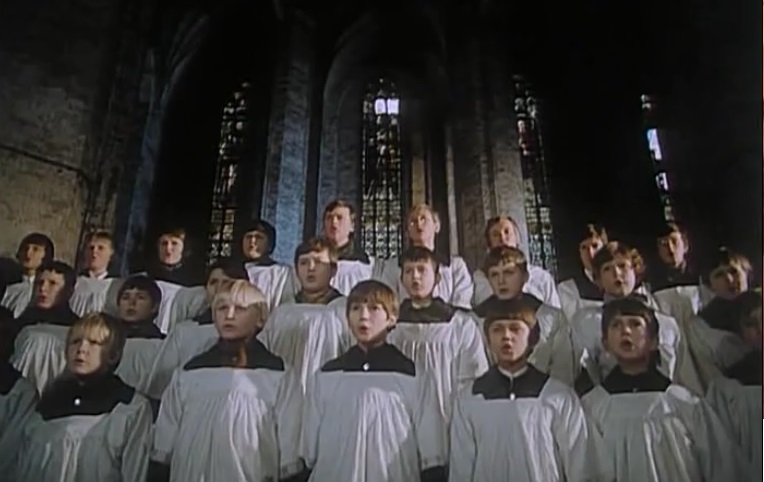
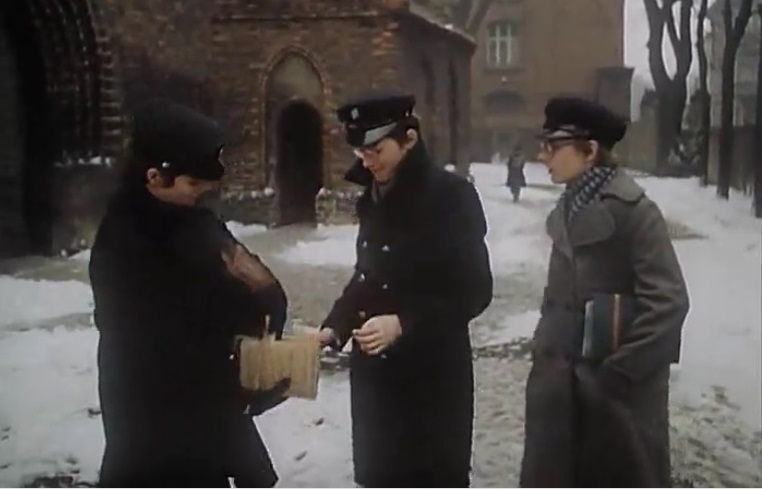
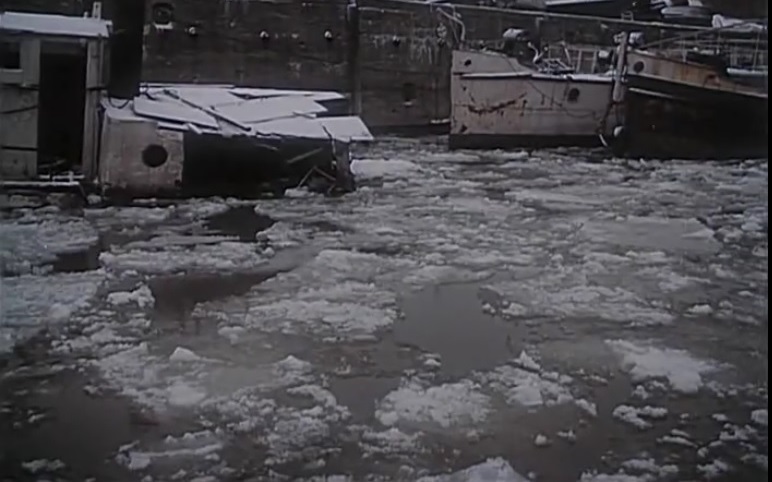
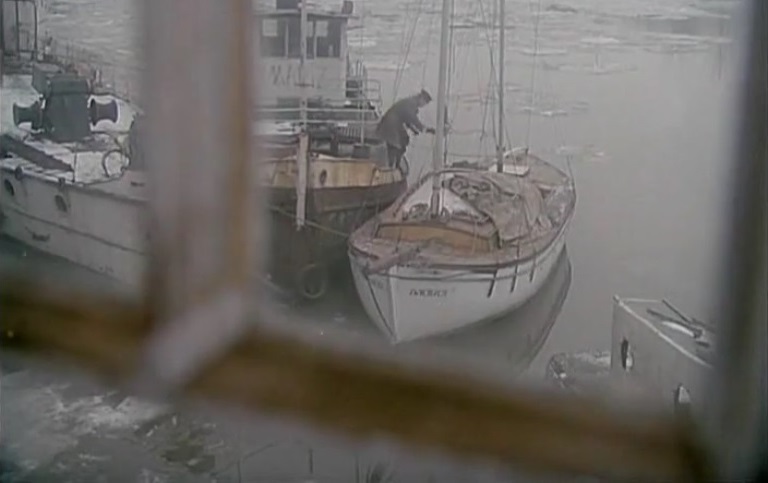
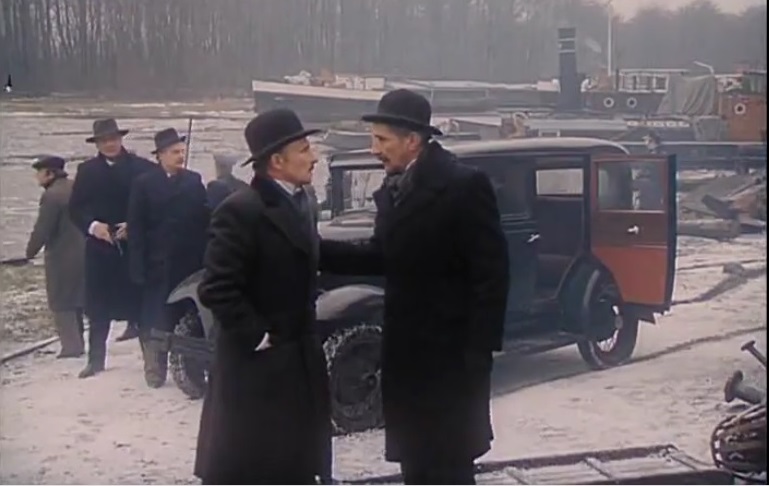
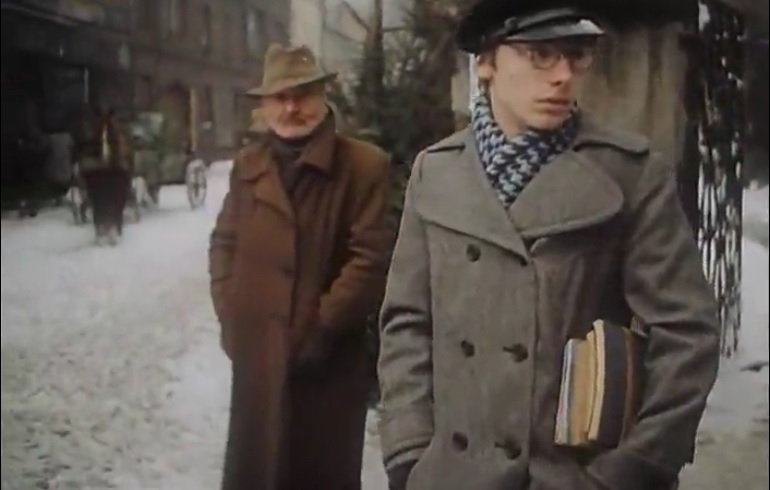
The film “Zamach / Assassination” directed by Jerzy Passendorfer in 1958 portrays one of the most effective assassination attempts ever undertaken by the Polish Home Army (AK), during the Second World War. The operation undertaken by the underground resistance army was aimed at killing SS-Brigadeführer and Police Leader Franz Kutschera, who was commonly known as “the butcher of Warsaw.”
The Józef Piłsudski Bridge turned to be an ideal structure to play the Kierbedź Bridge which was completely destroyed during the Warsaw Uprising and on which the assassination actually took place. Jerzy Passendorfer managed successfully reconstructed the whole operation, which originally lasted only one minute and forty seconds, in great detail.
Said bridge was once again used to play a bridge in Warsaw during the Second World War in the television production “Czterej pancerni i pies / Four tank-men and a dog” directed by Konrad Nałęcki, i.e., one of the most popular and regularly re-broadcast Polish TV series of all time. It can be seen in the sixth episode of the series, under the title “Most / The Bridge”, when the tank crew of the T-34-85 tank “Rudy 102” are trying to cross the Vistula River, and get hit by an armour-piercing shell.
There is one more location in Toruń directly connected to the TV series, namely a housing district called “Pancerni”, situated in the eastern part of the city (Bielawy-Grębocin district). When walking around that housing district, you are going to find street names dedicated to the majority of the protagonists from that TV series.
